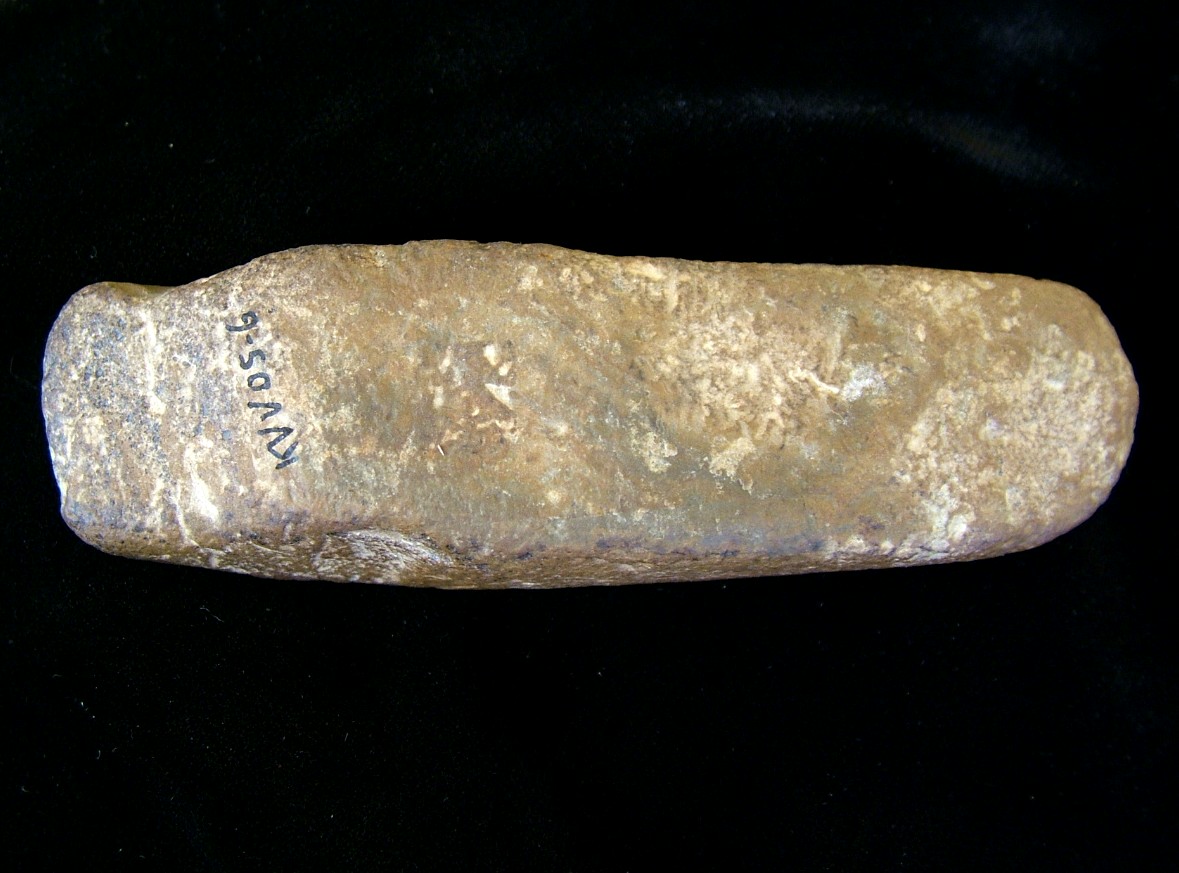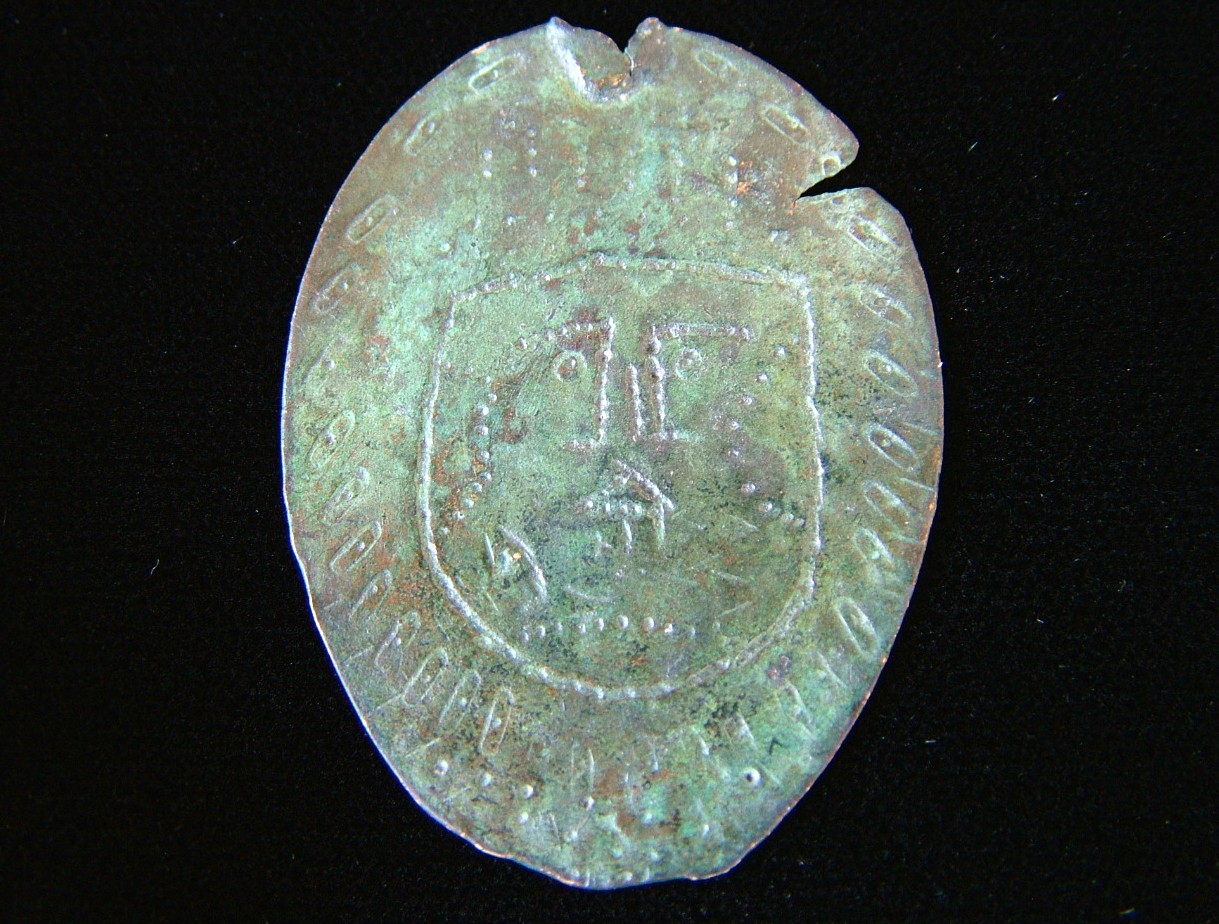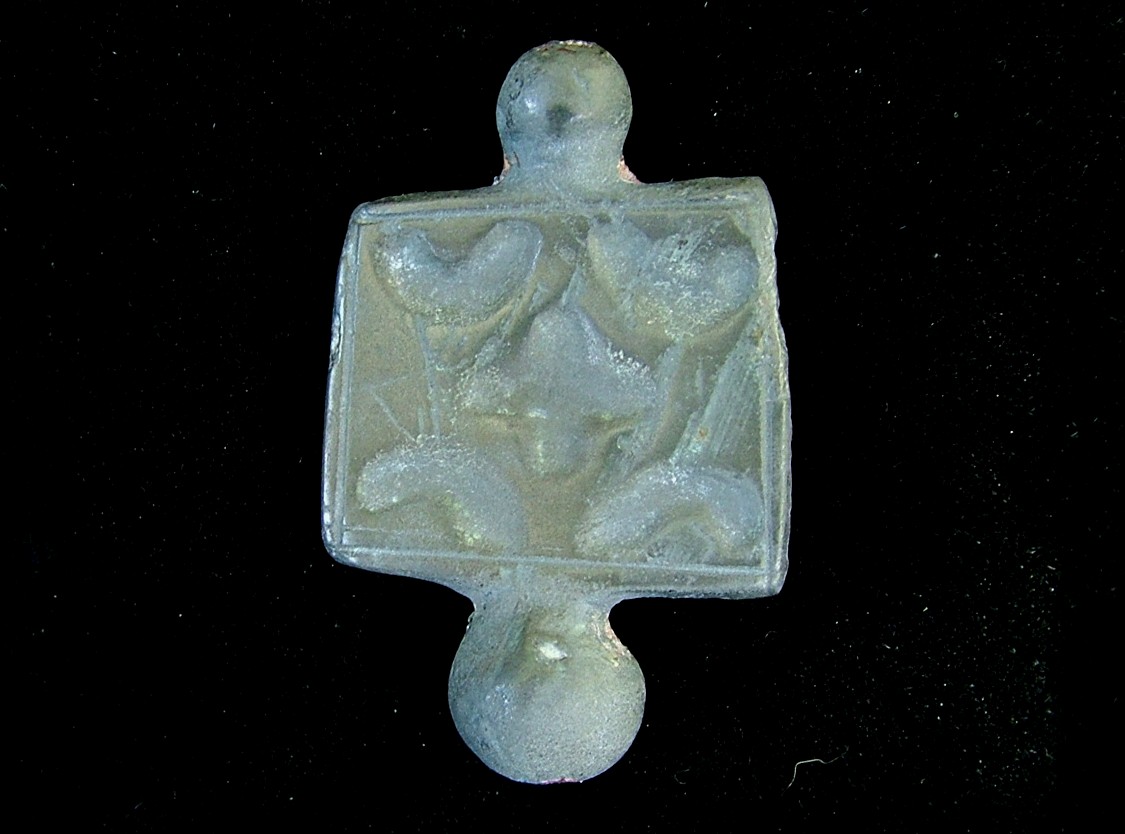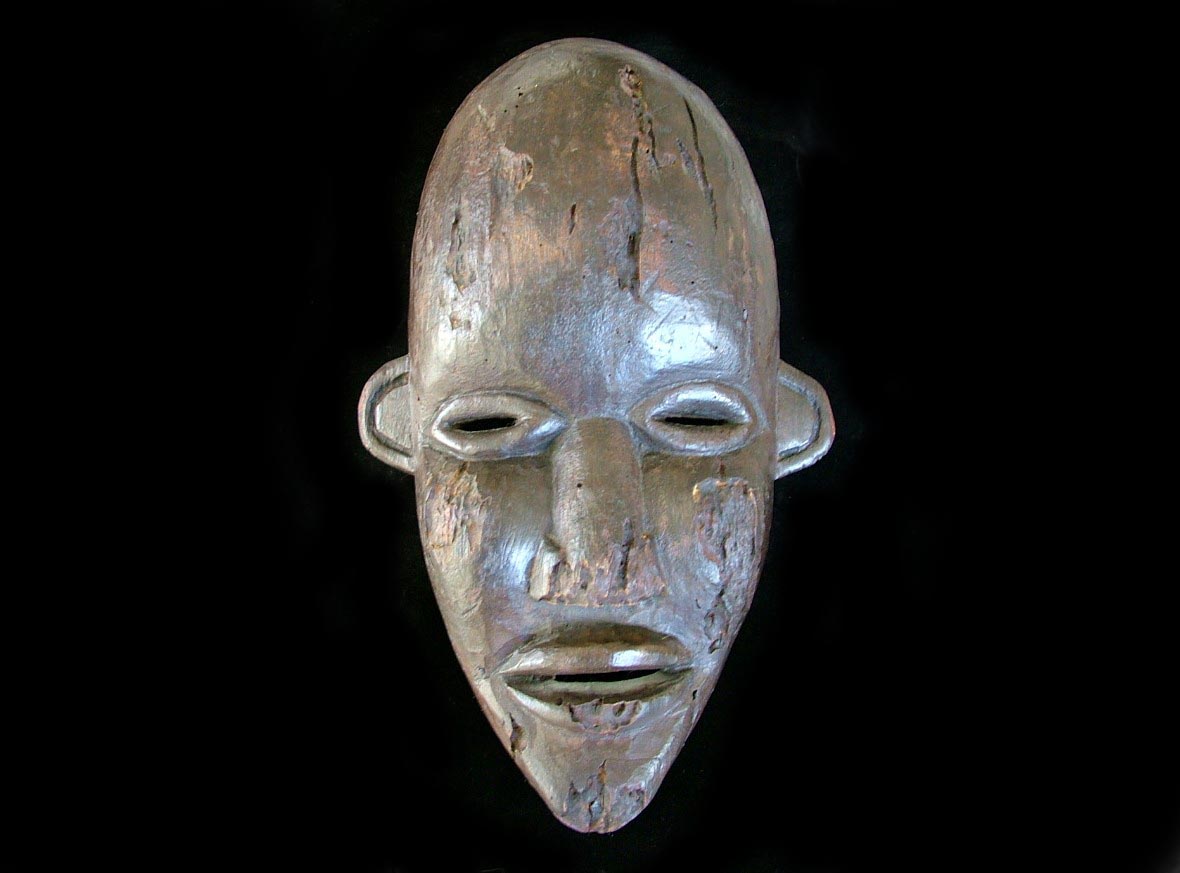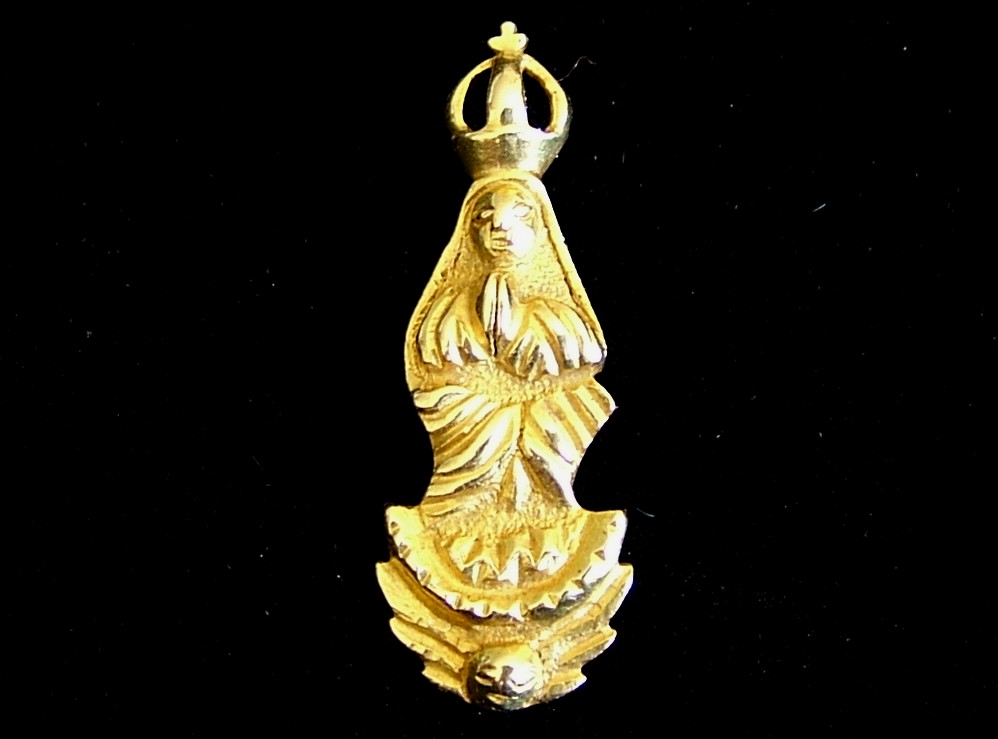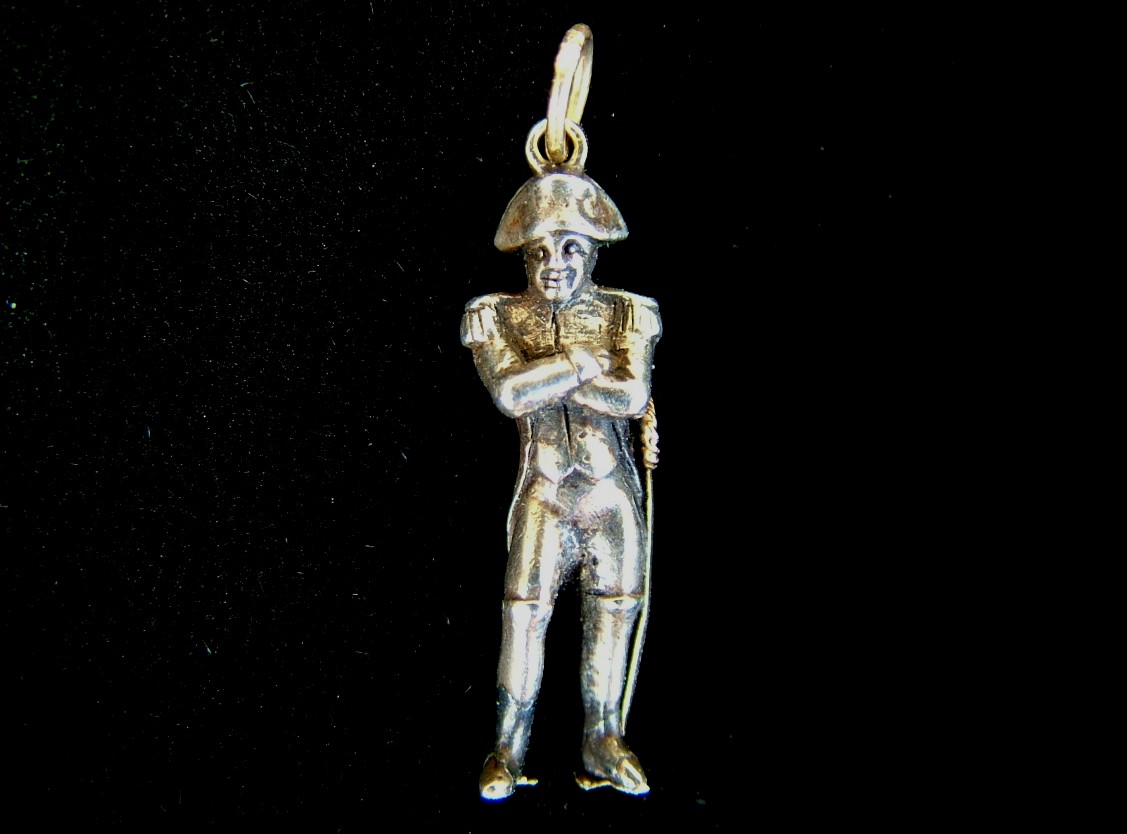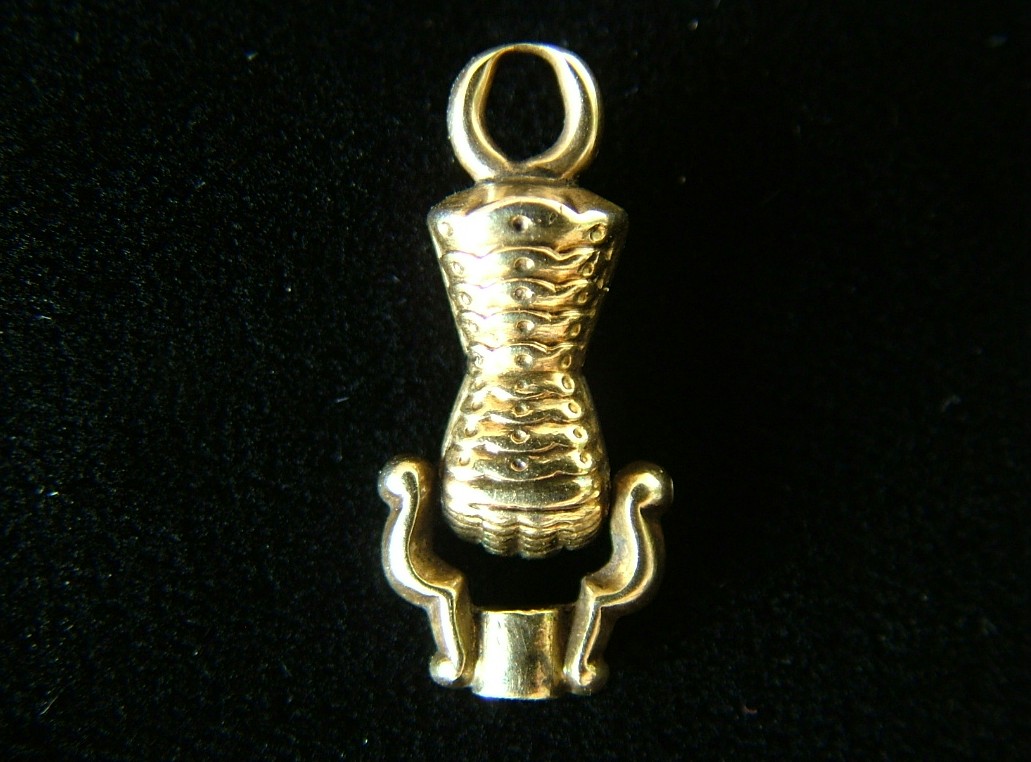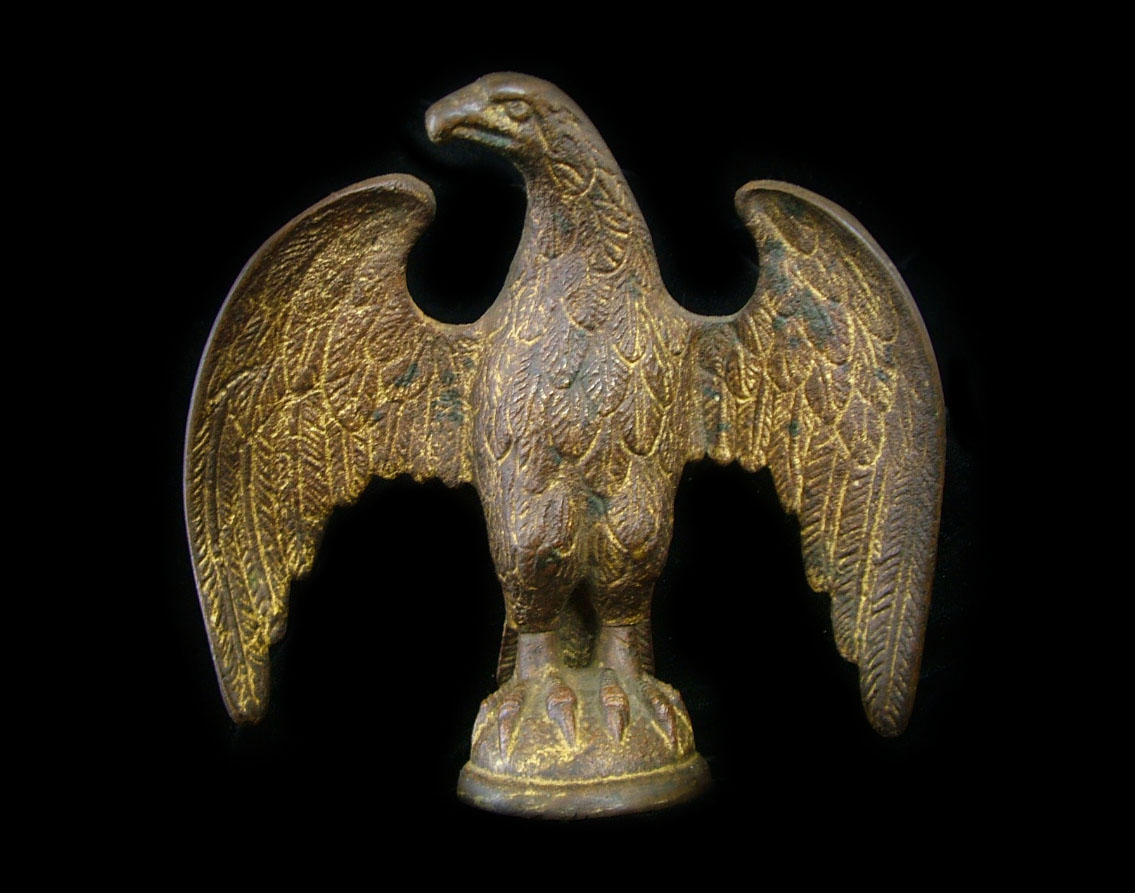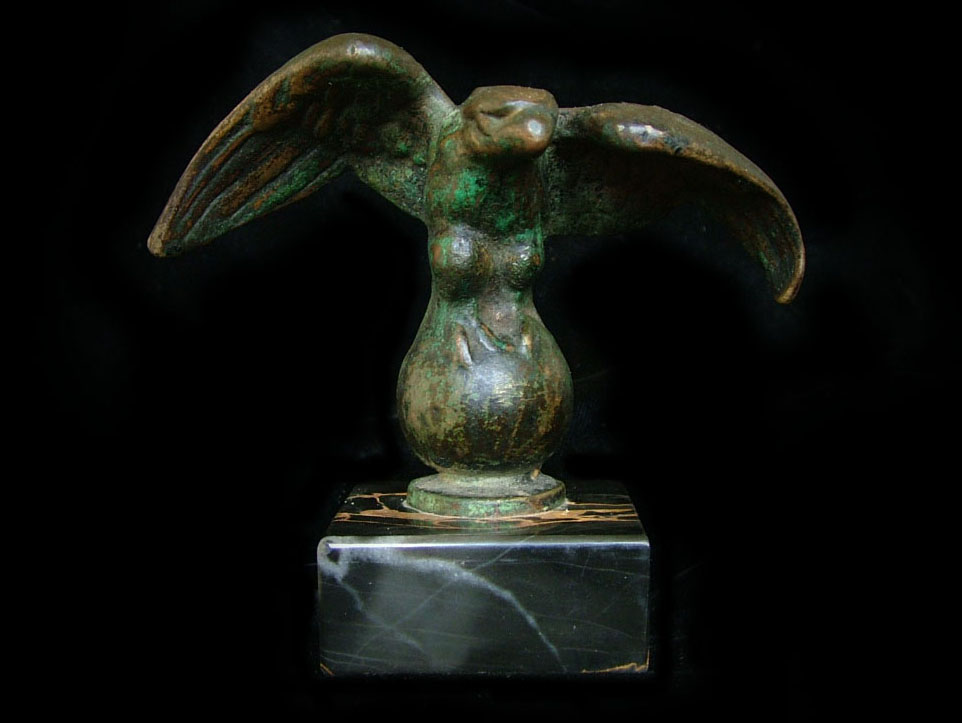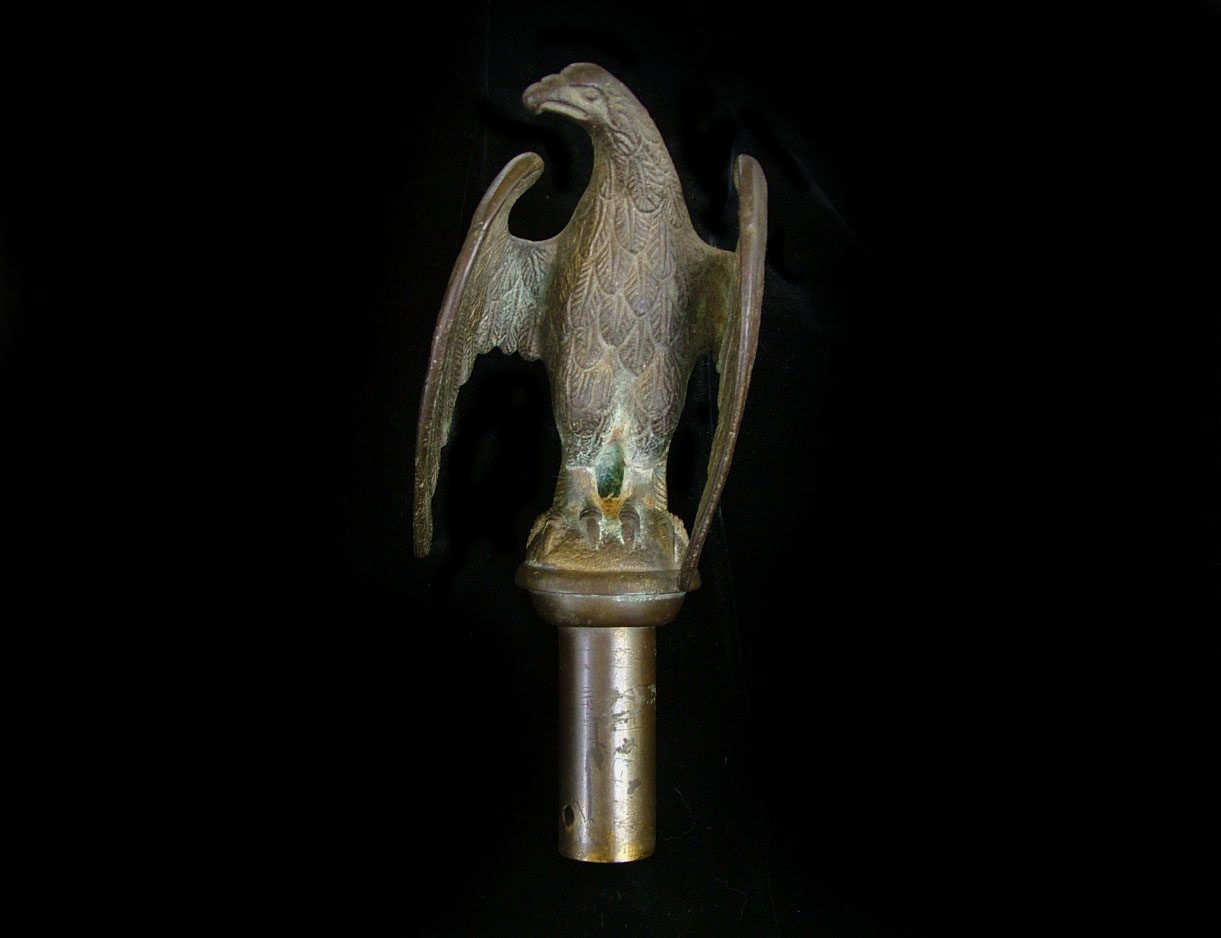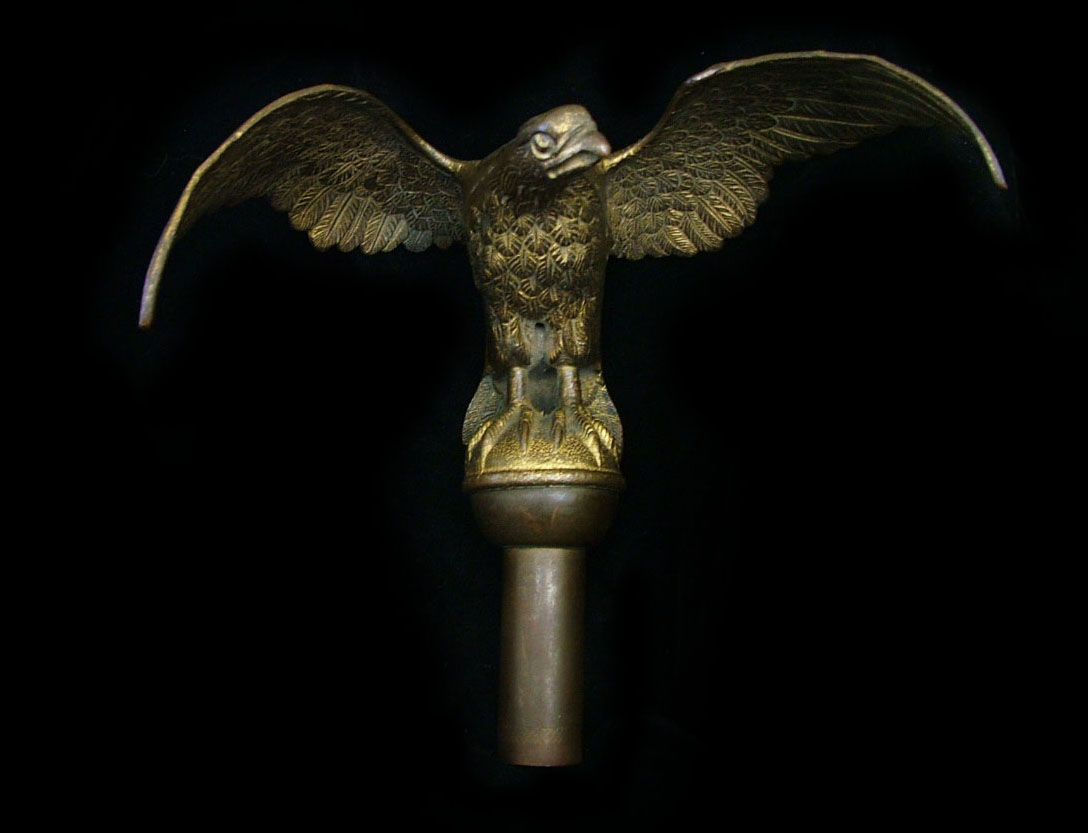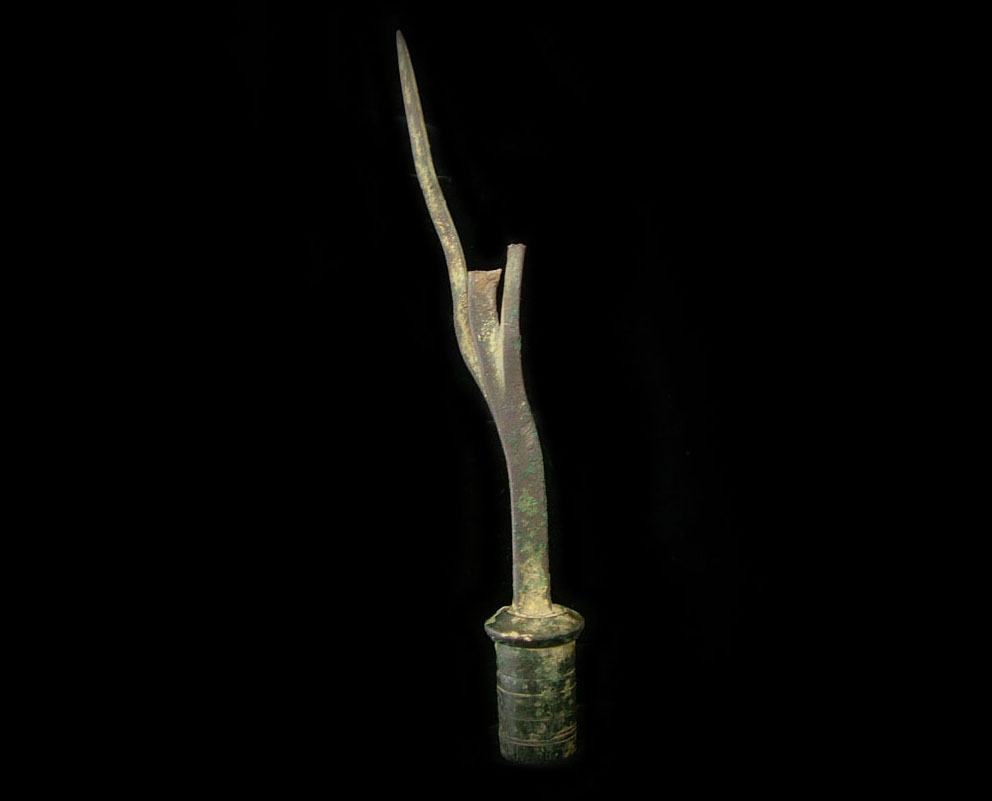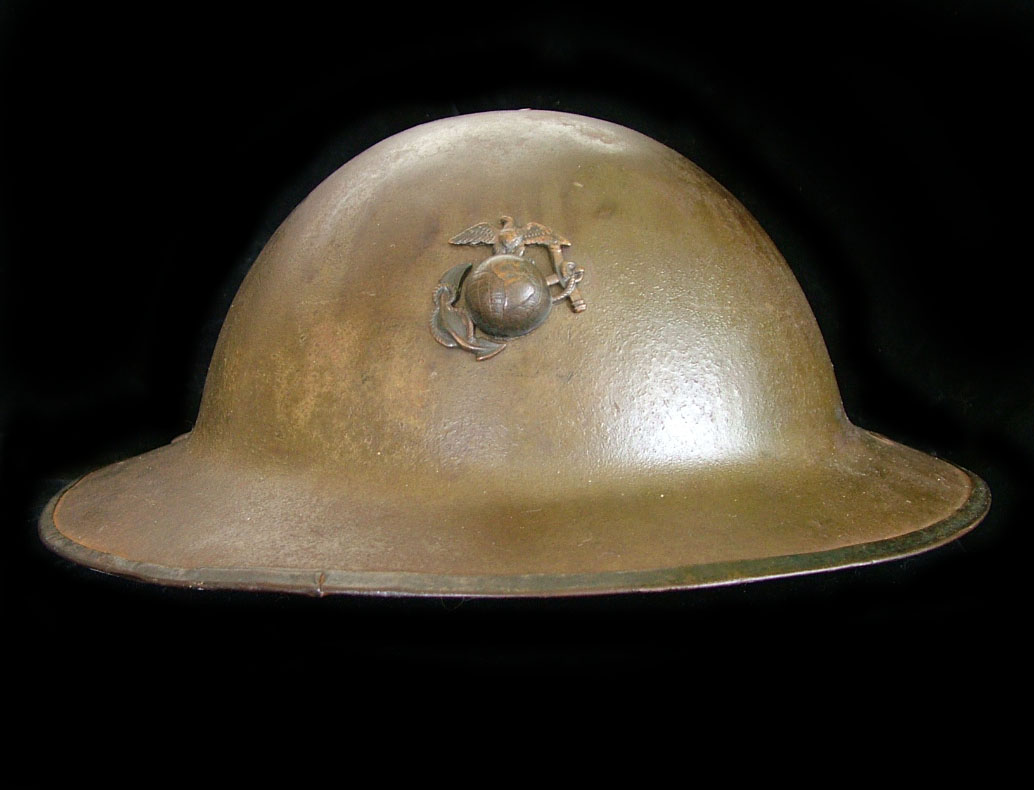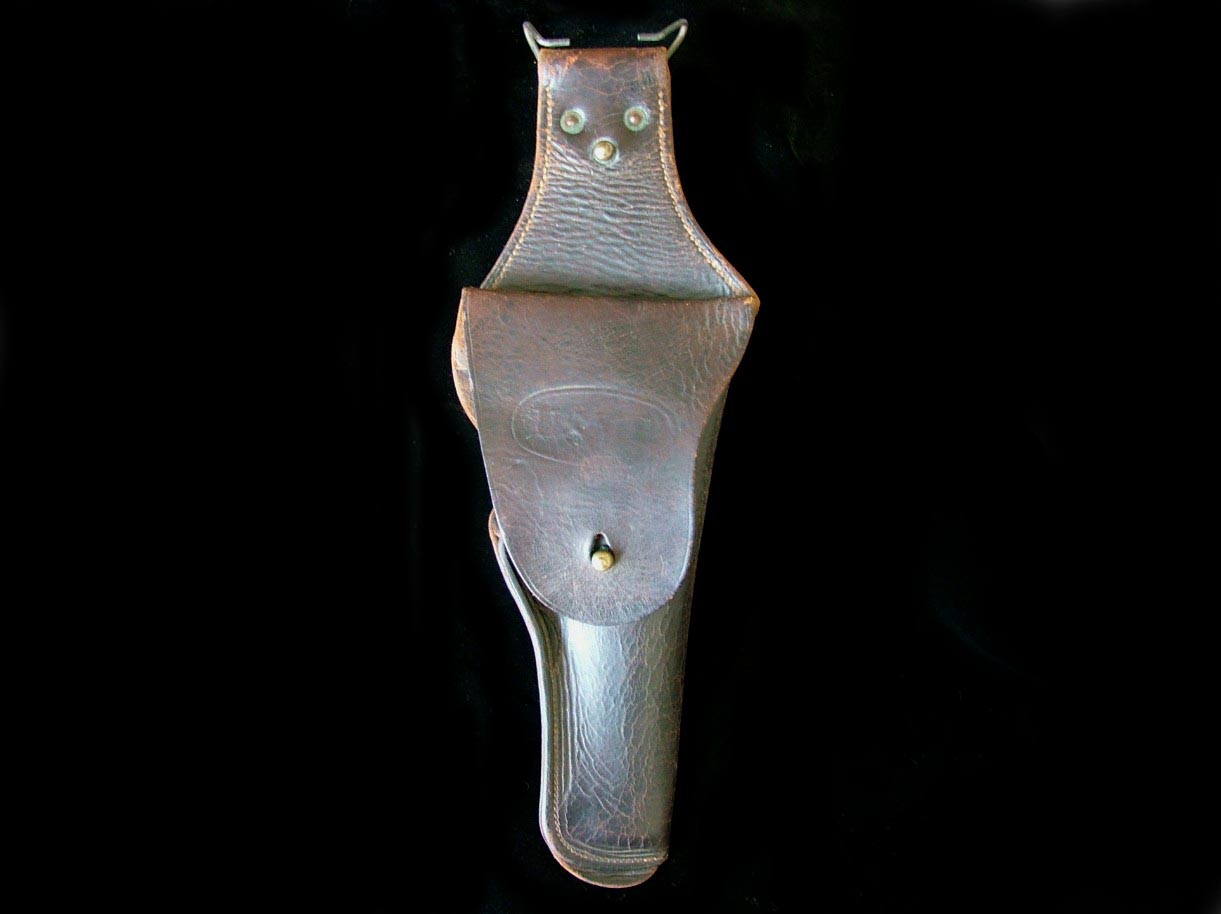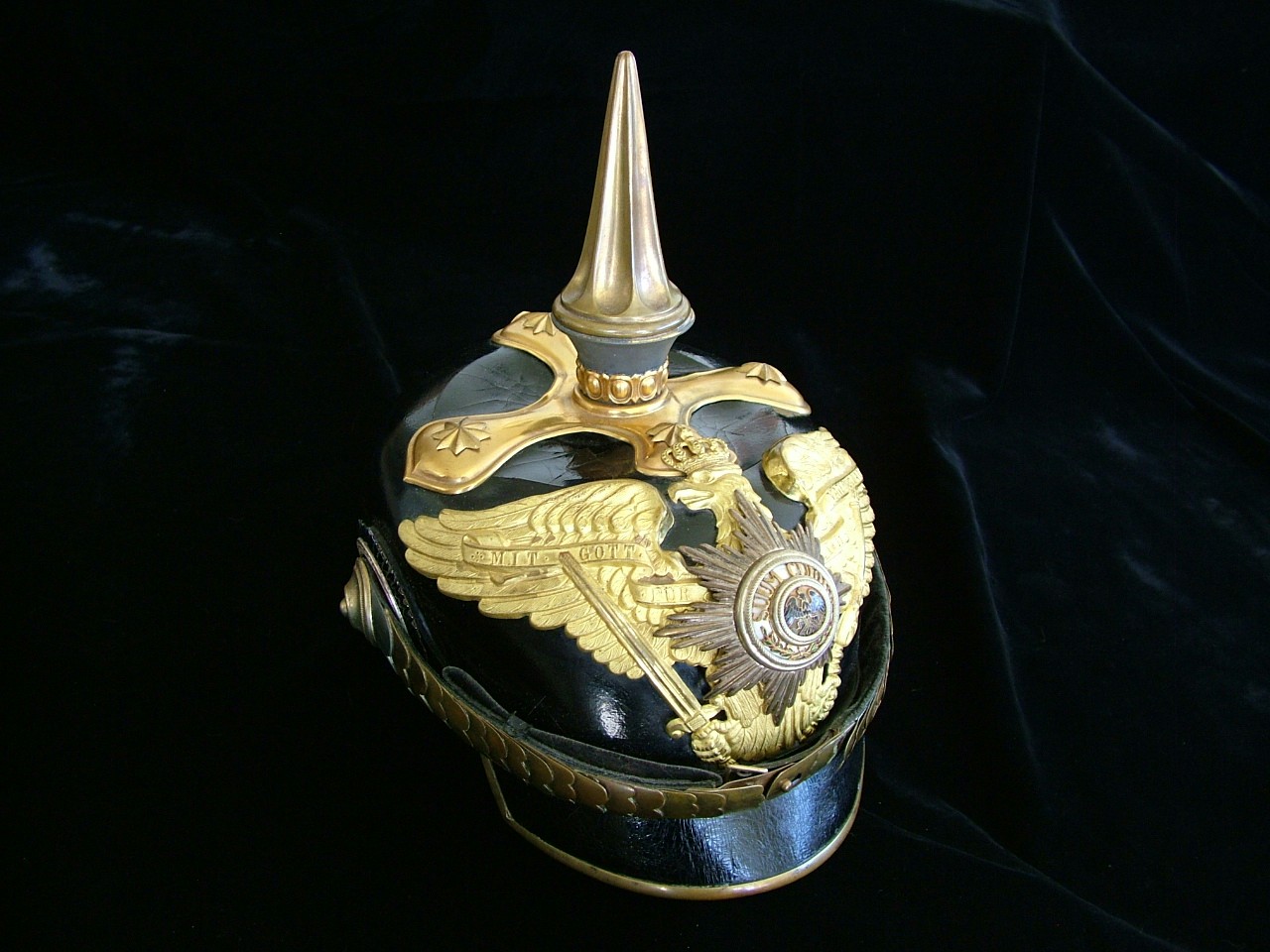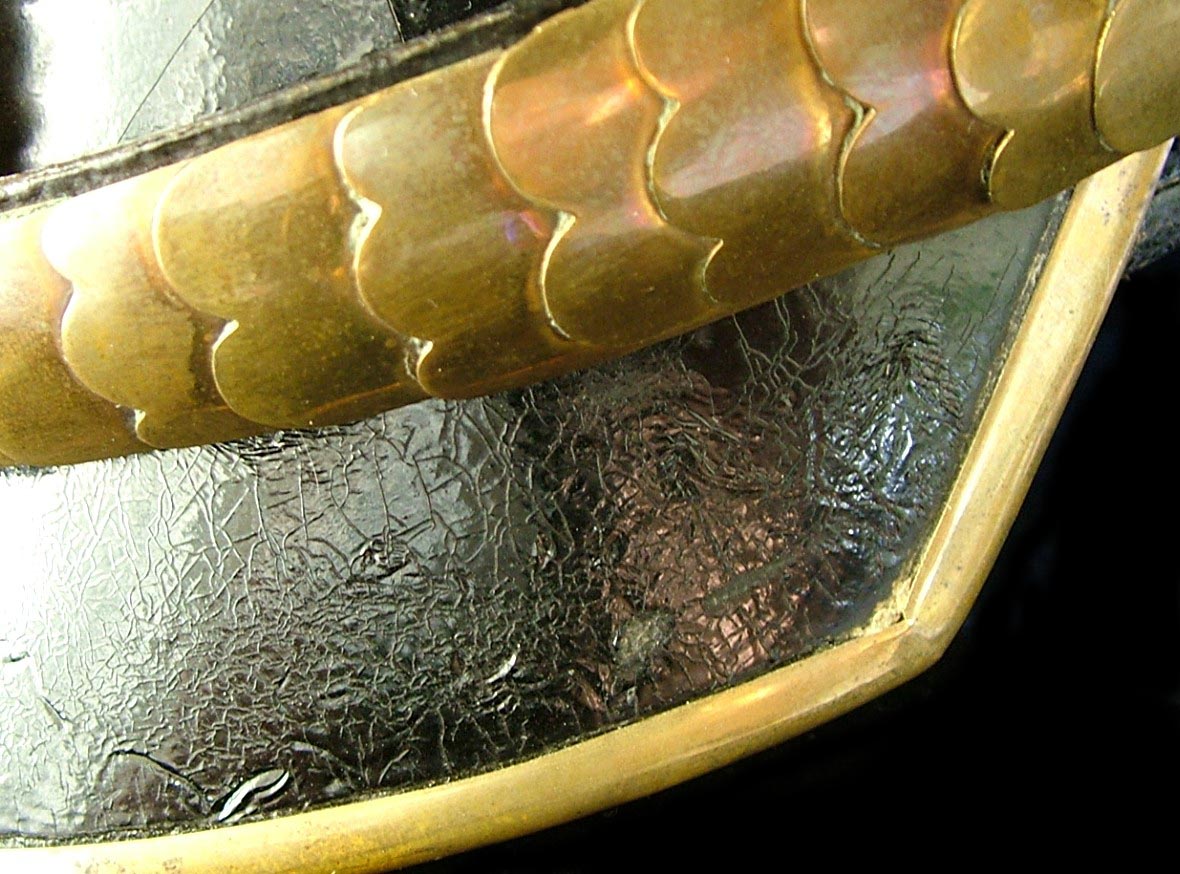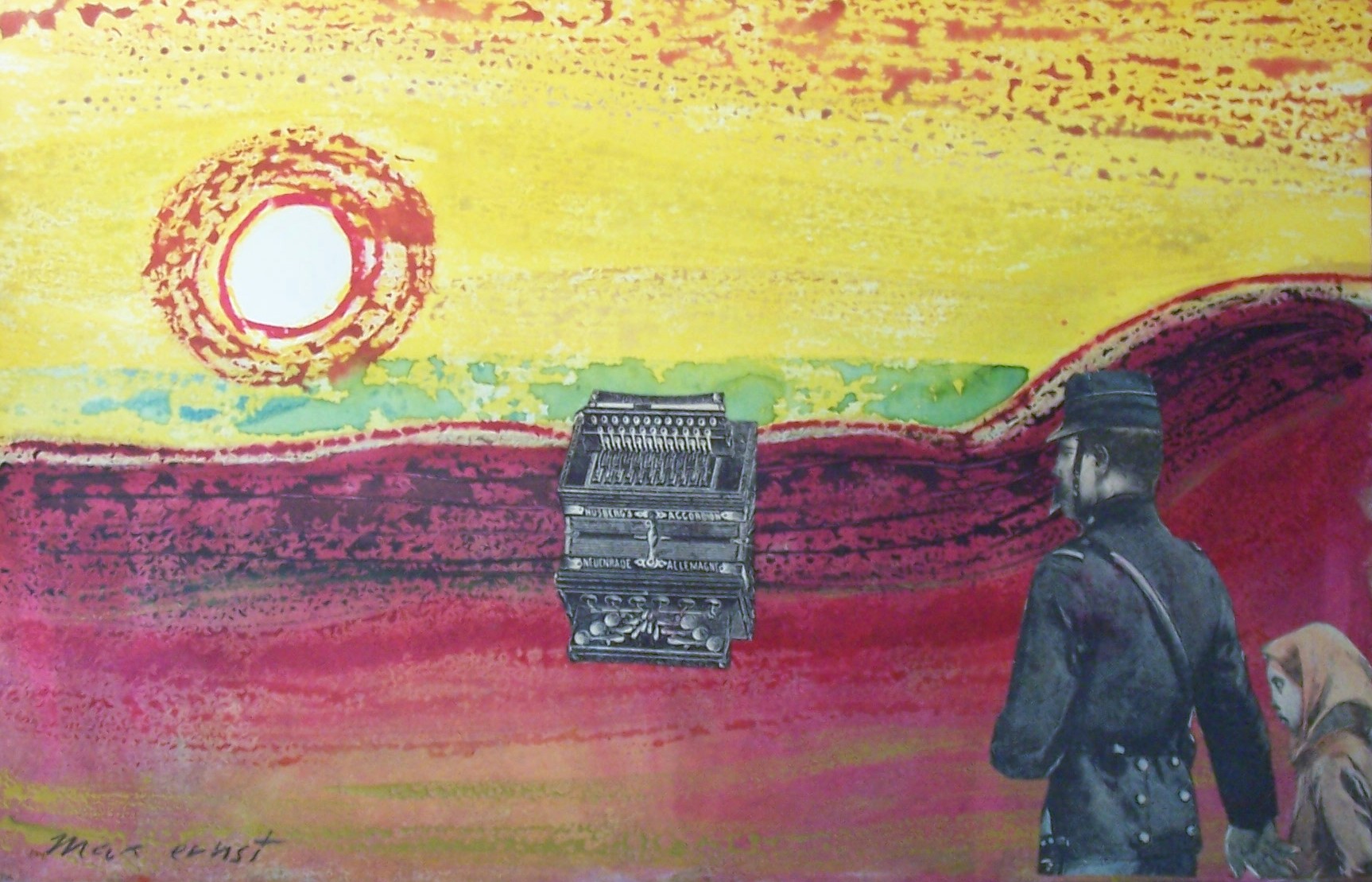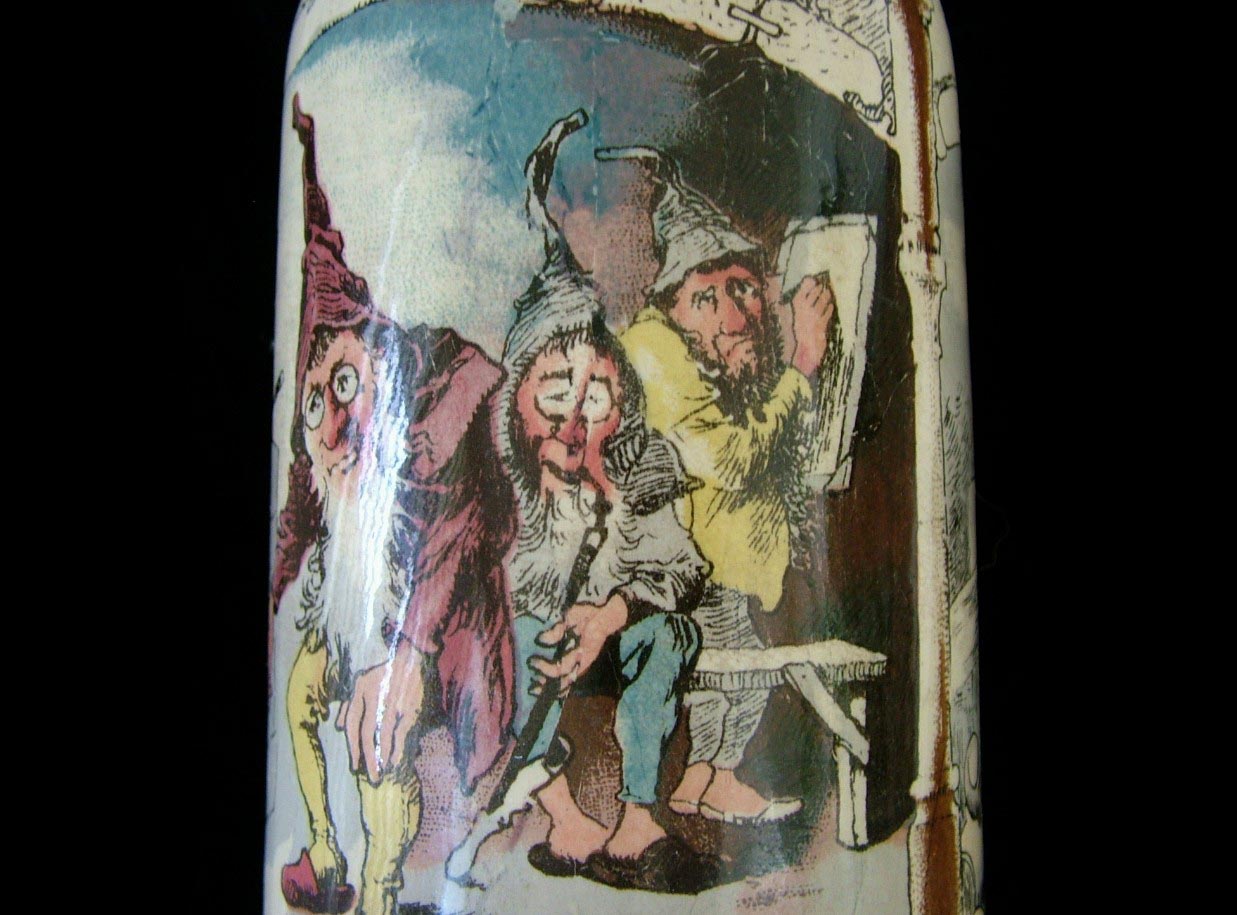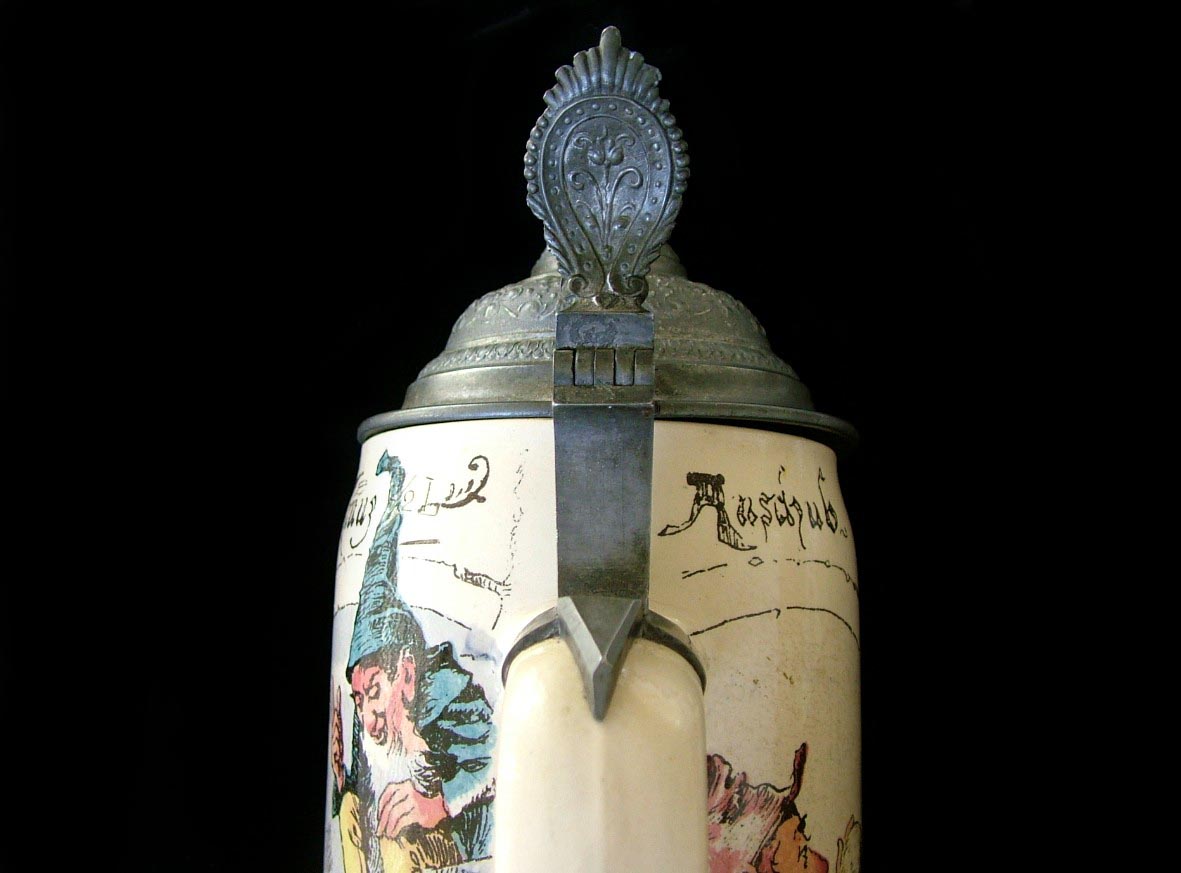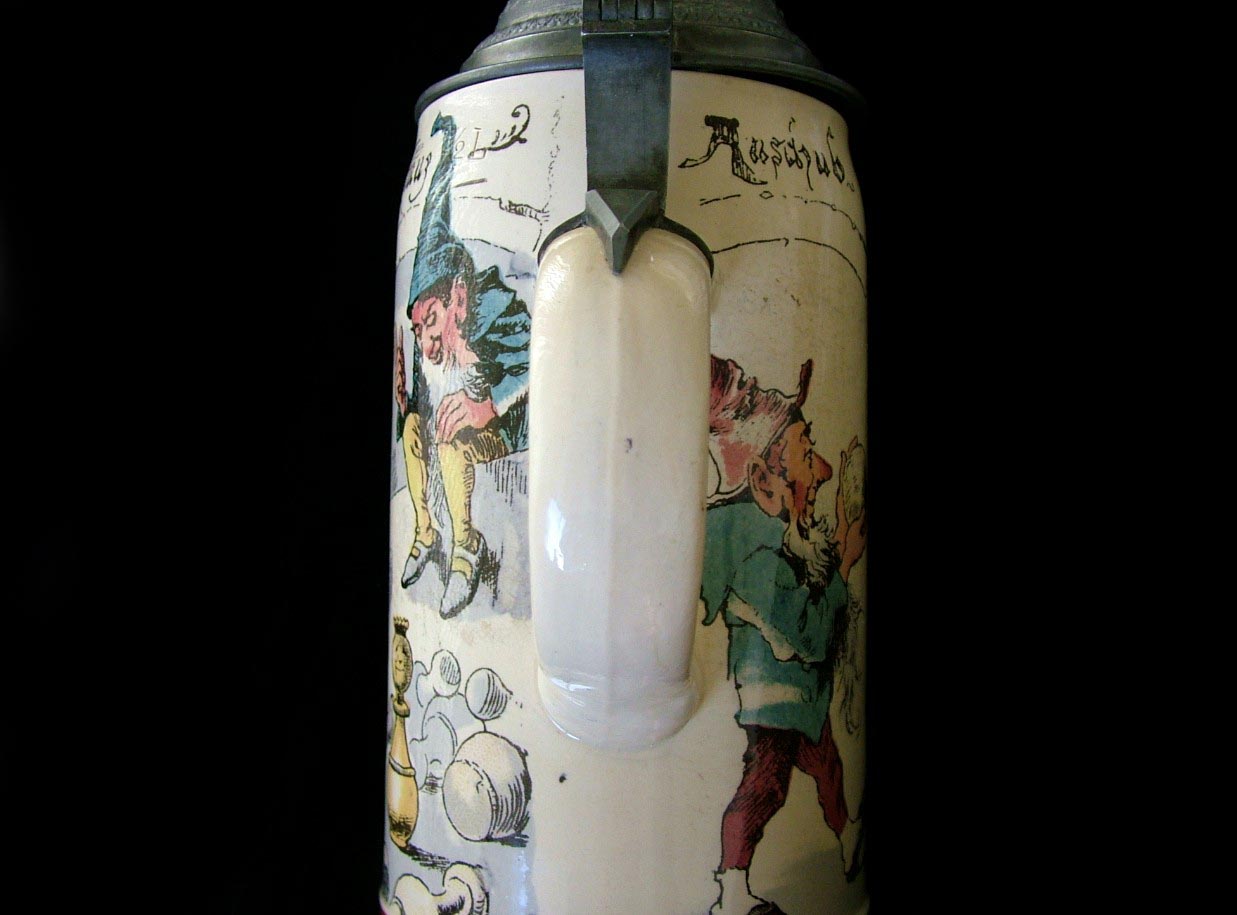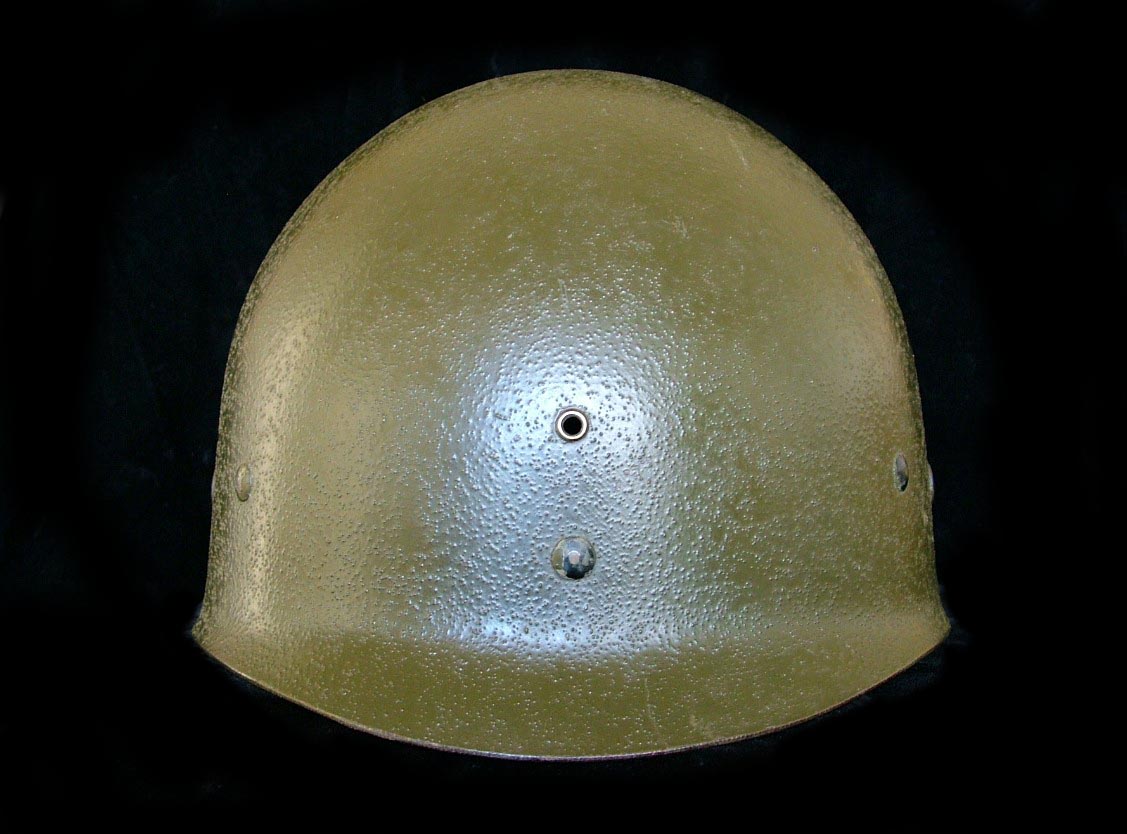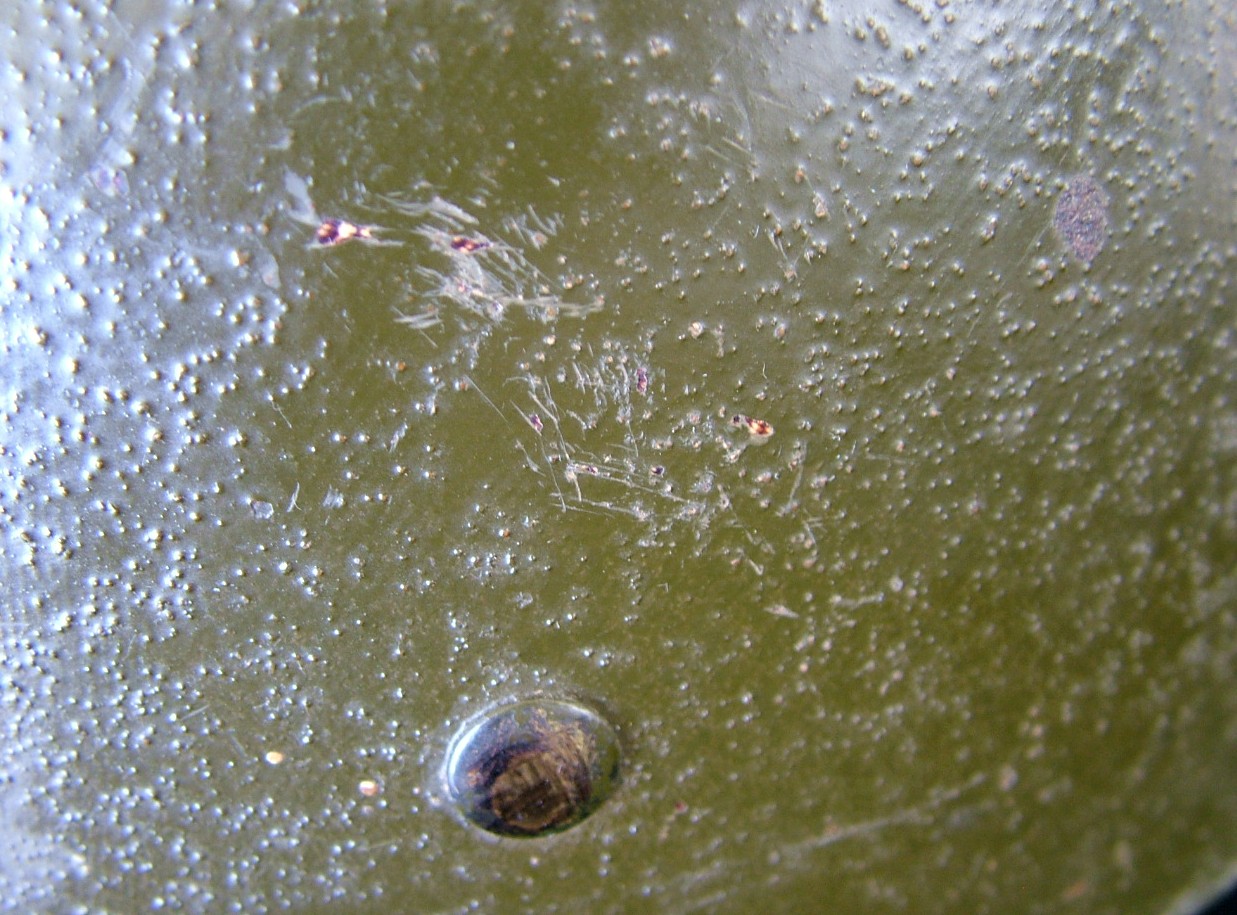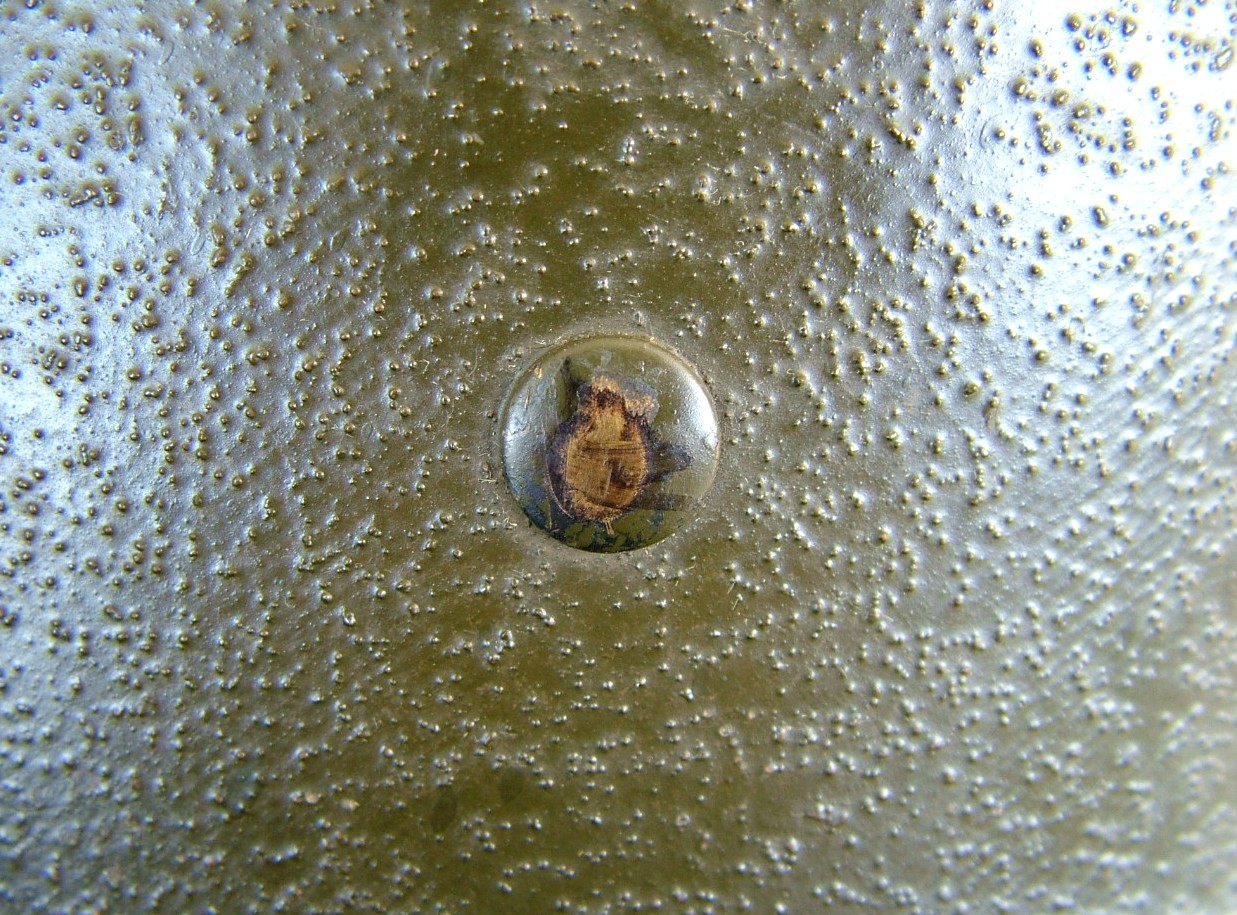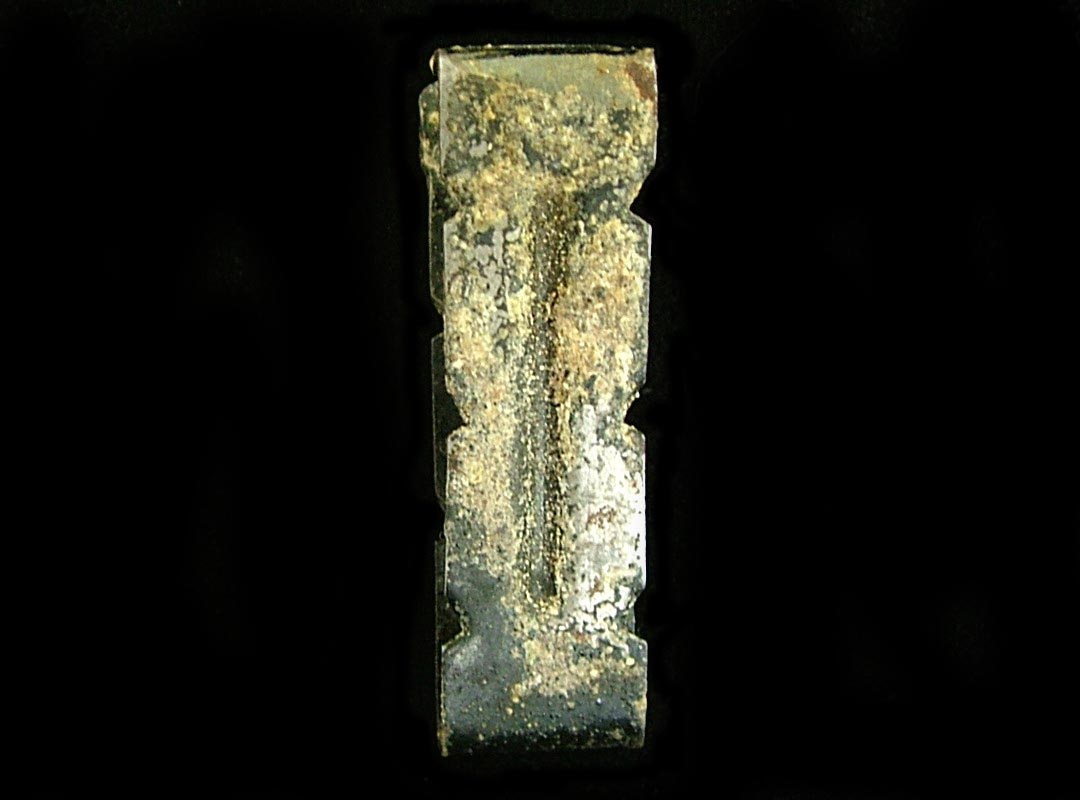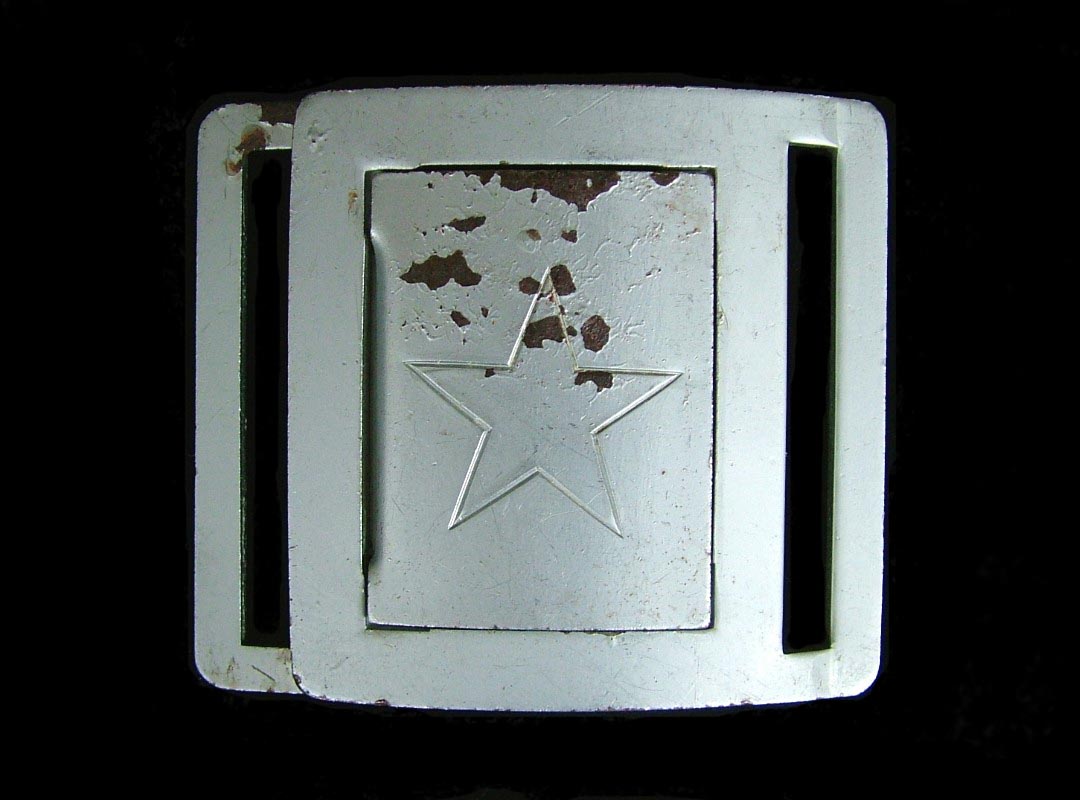 |
|---|
Roman Officer Ancient Miniature Art |
|||||||||||||||||||||||||||||||||||||||||||||||||||||||||||||||||||||||||||||||||||||||||||||||||||||||||||||||||||||||||||||||||||||||||||||||||
|
|
|||||||||||||||||||||||||||||||||||||||||||||||||||||||||||||||||||||||||||||||||||||||||||||||||||||||||||||||||||||||||||||||||||||||||||||||||
OTHER MINIATURE ART ARTIFACTSVIKING WETSTONE DEPICTING VARANGIAN GUARDSMEN This is a 11th to 12th C. Viking Whetstone, although Viking it may not be of the Viking Age (800 AD to 1066 AD). The Viking culture continued for some time (in some form) after the Viking Age. It is 9.8 cm in length and was found on the Jutland at Horsens, Denmark between 1920 and 1950. It is completely covered with miniature art figures and letters, at least some of these may have been a record or memento of an actual event, or events. The art was created with a carving tool, paint, chalk, charcoal, and a thin resin coating. This art is made so that it will change when slightly moved, it is in the tradition of an ancient type of art animation. After the art was created it does not appear to have been used as a whetstone. There is a type of seal in resin or wax (or resin / wax) shown on the front that has the distinct letters "VAR', which should be the Latin abbreviation for Varangian. This is done in a medieval gothic style with figures intertwined, it also will make a larger letter "M", to the left is an "S" and a cross, this appears to be an abbreviation for the Virgin Mary. I have stated before on writings on the Varangian Guards on kingarthurbanner.com that I believed that the Varangian Guards may have a cult of the Virgin Mary and, or Mary Magdalene, among other things there is a female figure shown in Picture 14, she is connected to a large ornate axe in a circle, I believe that this verifies that speculation, more info. on this subject to follow. In Pictures With Pictures 4 and 5 there is a long flag seen behind a figure that is holding a bird standard (that is also the letter "M"), the flag appears to have the letters "BAP", if so then this would be the Greek abbreviation for Varangian. Other pictures show that these standards are at the rear of a unit, to their front are horses and a unit being led by a central figure. Pictures 12 thru 21 show what appears to be a higher ranking Guardsmen, he has a smaller more refined axe (the axe head is next to his ornate helmet or hat). There is a distinct axe (that is also a horizontal bird that may be a pelican, and a vertical sword with a fleur pommel) shown in Pictures 29,30,31,33,and 34, it is shown in detail in Picture 34. Pictures 32 thru 34 may show the Guardsmen's rite of pillaging the imperial treasury upon an emperor's death (but only as much as they could carry), the rite was a Viking tradition and was only allowed by the Guardsmen. Picture 36 shows a Latin or Greek inscription mixed in with the depiction (a group of figures in a line). The Varangian Guard were an elite Guard of the Byzantine Emperors, initially their members were from the Varangians (Eastern Rus Vikings), then Vikings, and then Vikings and others (mostly of various Germanic tribes). Copyright 2007 David Xavier Kenney |
|||||||||||||||||||||||||||||||||||||||||||||||||||||||||||||||||||||||||||||||||||||||||||||||||||||||||||||||||||||||||||||||||||||||||||||||||
|
|
|||||||||||||||||||||||||||||||||||||||||||||||||||||||||||||||||||||||||||||||||||||||||||||||||||||||||||||||||||||||||||||||||||||||||||||||||
OTHER MINIATURE ART ARTIFACTSGERMAN KNIGHT'S OR VARANGIAN GUARD'S PASSION BATTLE AXEHEAD (Archived) |
|||||||||||||||||||||||||||||||||||||||||||||||||||||||||||||||||||||||||||||||||||||||||||||||||||||||||||||||||||||||||||||||||||||||||||||||||
|
|
|||||||||||||||||||||||||||||||||||||||||||||||||||||||||||||||||||||||||||||||||||||||||||||||||||||||||||||||||||||||||||||||||||||||||||||||||
OTHER MINIATURE ART ARTIFACTSEYE OF THE TEMPLAR This is a Medieval bronze or brass oval plate with punch dot engraving, circa Late 13th to 15th C, it has a thin lead wash on it. It may be of the Knights Templar or of a later Knights Templar enthusiast, if so then it would most likely have been during or after the later reign of Henry VIII (along with the advent of English Protestantism). The origins of this piece are unknown, but it was bought with five other artifacts that appear to be of the same period, one is a seal of a Knights Templar from York, England. Two of the artifacts had tags, one of these tags had a price written on it in English Pounds, both tags appeared to be from the 1950's to the late 1960's. The piece is hammered (possibly from a coin) as to give the appearance of a funerary eye plate. There are various indicators are that it was not used for this, but rather that it had been made as a ritual piece, possibly for an initiation. There are two specks of gold on the plate, which suggests there had been at least some gold gilding. The punch dot design around the border appears to represent a lion's mane. The central figure is also done in punch dot, made in the shape of a shield; it depicts a knight's face with chain mail. The eyes along with the punch dot around the eyes (chain mail) may represent a stylized double headed eagle. On top of the face/shield in punch dot are 6 separate vertical lines. The mouth of the knight's face is made to represent a temple front, with three columns. On the lower left of the face the number 61 is engraved. When this is turned upside down it will turn into the numerals 1119, the nine also appears as a face. 1119 AD is the date of the founding of the Knights Templar. Another area has a reference to the Templar Round Church in London. There are many miniature figures, scenes, and inscriptions on this. Our focus is the art with the two areas that are purposely cut, these are at 12 o'clock and 1 o'clock. The first area (at 12 o'clock) shows a bee headed figure and another figure facing each other. When this is turned it will become a beaver with a cap with a tooth in its paw. The second area shows scenes that may have to do with a bee hive, the last few pictures show a central "bee man" being held by four or five other bee man figures that are helmeted (all these bee men figures appear to be knights). There is a large darker bee figure in front of these figures, it is sitting with the cut area in front, it is as if the cut area is a crevice. All this may be symbolic of the drone honey bee that successfully mates with the queen honey bee and then dies. If so then the Masonic term "son of the widow" may unknowingly be a term that once meant 'son of the queen honey bee"; possibly suggesting order and enlightenment. The piece is oriented according to the points of a compass. There appears to be a stylized map and suggestions of a westerly voyage, if so then according to an inscription the date of this voyage had been in 1261 AD, this date is most likely what the "61" represents. This may or may not be significant as to the hypothetical lost treasure of the Templars, if so then it is most likely symbolic. Copyright 2008 David Xavier Kenney Revised Nov 08 |
|||||||||||||||||||||||||||||||||||||||||||||||||||||||||||||||||||||||||||||||||||||||||||||||||||||||||||||||||||||||||||||||||||||||||||||||||
|
|
|||||||||||||||||||||||||||||||||||||||||||||||||||||||||||||||||||||||||||||||||||||||||||||||||||||||||||||||||||||||||||||||||||||||||||||||||
OTHER MINIATURE ART ARTIFACTSLATE 15TH C. BROOCH COMMEMORATING DRACULA THE GUNNER AT THE NIGHT ATTACK This is a Late 15th C. Lead and Bronze Brooch of Prince Vlad Tepe III, who lived from 1431 to 1476. The Prince is also known as Vlad IV, Vlad the Impaler, or Dracula. On this brooch, "Dracula" is depicted as a Gunner at the "Night Attack" (Romanian, Atacul de Noapte) on June 17th, 1462. It was no doubt made for a veteran of that raid, who had actually had been a gunner, very possibly it was made during this period. In 1461 Dracula began a guerrilla war against the Ottoman Turks, during this period he employed firearms and cannon in the most creative and effective fashion up until that time*. The Night Attack was a "Night Time Raid in Force" made by Dracula and his troops (from a mountain that was a natural fortress) during his campaign against an invading Ottoman Army, his objective was to capture or kill the Army's leader Mehmed II (the Sultan of the Ottoman Empire), in order to gain intelligence on the enemy camp Dracula had disguised himself as an Ottoman. Dracula failed in the raid's objective (although he did manage to kill two Grand Viziers), but supposedly he inflicted heavy causalities on the Ottomans, events later show that this raid can be seen as a strategic success. To the rest of us, Dracula or Vlad the Impaler was a cruel and excessive Wallachian noble who became the inspiration for the romance horror figure of Count Dracula of Transylvania. To many Romanians he was and is a first rate national hero that saved their territory from an occupation. The information on this brooch should verify beyond a doubt that Prince Vlad Tepe III aka Dracula was the inspiration for the Count Dracula of Bram Stoker's "Dracula" novel, but it also gives an insight as to how Dracula's troops viewed him and more. The brooch itself is made of lead and has many engravings and inscriptions; most of these inscriptions are in Latin, although there are some in Cyrillic. According to the inscriptions and iconography on this brooch Dracula's troops thought that he was a dashing, progressive, and highly effective guerrilla leader, any atrocities are seen as just a matter of fact with their war. There is an inscription that makes it evident that they knew him simply as "Dracula" (for a 15th C. European noble this is highly unusual), but the iconography shows that there is much more to this. Picture 1 shows the brooch in the position to be worn. It has a banner with a cross with four quarter moons; this is obviously a reference to a banner representing the City of Constantinople that eleven years earlier had been conquered by the Ottomans and renamed Istanbul. Picture 2 shows the cross has a figure with a Janus head holding a cannon that faces to the left (the cannon has faces representing the typical engravings of many cannons of that period). The cannon is mounted, and the large ball below represents the cannon shot. The area around the cross hints at a matchlock mechanism. Picture 3 shows the brooch upside down with a small ball on the bottom. Picture 4 shows the cross as a woman (facing the viewer), with long hair holding a hand cannon that faces to the right (again the cannon has faces). The small ball below is the hand cannon shot. This may be the first reference to Artillery (cannon) as the "King of Battle", and the Infantry (hand cannon) as the "Queen of Battle". Although Dracula did in fact have women in his army (for this campaign against the Ottomans he had drafted women and children), it is still more likely that this is symbolic. Picture 5 shows the back of the brooch, which has a bronze pin. Picture 6 shows the brooch sideways (once again the cross is of a figure holding a hand cannon). It depicts a Turk in a helmet as a rider (and therefore an Ottoman noble). Pictures 7 thru 16 show the quarter moon is a figure pulling a rope with a hook on the Ottoman's nose (this is a reference to one of Dracula's atrocities), above this scene there are very light engravings, these will be photographed for detail at another time. Pictures 7 thru 16 show a figure shaped like a ghost behind the Ottoman's head. This ghost has two aspects; one facing the viewer and the other facing and on the neck of the Ottoman. The name "Dracula" is engraved here in a type of bind script. The ghost may also be seen as a type of amphibian (in my opinion it looks like a tadpole) with a large diamond (so this may be a mythical marsh creature based on the transformation of a frog, if so then perhaps it is a pagan symbol of resurrection). When the ghost is seen from the right and on top, it transforms into a bearded man in a Cossack hat (perhaps symbolizing a legendary mountain man who was also a guerilla leader), he is also a large pommel of a curved dagger that is like a claw (this may be the claw of a Eurasian lynx). The very lightly engraved art around the script shows a hooded figure with a mask facing left, but seen as a frontal view it looks like a face with fangs, which may represent a lynx (due to a Eurasian lynx's pointed ears it could have been seen as a creature of the devil, perhaps a "Dracula" as in "Of the Devil" or "Son of the Devil"). When viewed with the script it can also appear as a figure or figures on horses (possibly representing mounted raiders). The ghost aspect may or may not be associated with the traditional masks of Romania and Bulgaria, these are used in rituals by men only, they may have been worn by Wallachian and Transylvanian raiders to instill fear and keep there identities unknown, what may compound this is that in the mask ritual it is taboo to mention the wearers true name. Whatever all this is exactly, it is evident that the main theme is of a mythical creature that could have at least some human and animal form. Dracula's troops knew his name represented this creature that most likely was called "the Dracula", which probably meant ?of the Devil or "Son of the Devil?, with this it should be mentioned that the devil and the dragon have the same meaning with modern day Romanians. Dracula's name is generally thought to have originated from the fact that he belonged to the Order of the Dragon and that his father had belonged to that same Order (hence "Son of the Dragon"), this makes good sense, but he may have also associated this with local lore that he knew instilled fear, and then used it as his warrior leader's title (it is very much accepted that Dracula excelled at psychological warfare, not to his credit he based these tactics of exaggeration with reality). So at least some of this depiction appears to represent his abilities as a guerilla leader and that he was called Dracula by his troops, but there is more. In Pictures 17 and 18 the ghost can be seen as if drinking from the Ottoman's neck which along with the helmet and head also forms a bowl; there is also a larger bowl around the cross. So all that should be a reference to Dracula ambushing like a Dracula creature (a devil), but then also drinking the blood of his enemies (this is thought to be propaganda by some, but this reference states that he may have actually done this). The line along the Turk's helmet back is a lance, which is a reference to Dracula's practice of impaling his enemies (Dracula's most notorious and infamous atrocity). However the art on this brooch suggests that he only impaled Ottomans. If so then his troops may have seen this atrocity as justified as years earlier the Ottomans had impaled Wallachian nobles after they had won a battle. The position of the lance and the mouth of the ghost hints that the stake (represented by this lance) used for impalement may have been nicknamed "Dracula's Mustache". All this should be prior to the Night Attack, most likely during an ambush during 1461 when Dracula was using guerilla tactics against the Ottomans in Bulgaria. Picture 19 shows the brooch positioned sideways the other way; once again the cross has a gunner holding a hand cannon. Pictures 20 thru 24 show Dracula in a long, backward sweeping mustache and wearing the hat of the Holy Roman Empire's famed pikemen, the Landsknechte who used the arquebus (a muzzle loaded firearm). This hints that Dracula may have employed or received firearms training from the Swabians. His hat also resembles the Sphinx of the Bucegi Mountains in Romania. In Pictures 22 thru 24 you can see that Dracula's mustache is also a firearm, it is a short arquebus. On the butt there is a lioness head over a long snouted dragon head. This type of dragon head is very similar to that seen on the seal of the "Order of the Dragon"; this is the same Holy Roman Knight's Order that Dracula and his father Vlad II Dracul belonged to (the Order of the Dragon was a Roman Catholic Military Order that had accepted some Orthodox Christian nobles to protect against the western advance of the Muslims). The lioness over the dragon head should be symbolic of St. George's victory over the dragon; it shares the same symbolism as the lion defeating the dragon of the Order of the Dragon. The tip of the arquebus's barrel may be a dragon head, it suggests that the arquebus itself may have been seen as a devil or the weapon of the devil. This is may be due to the fact that at this time European nobles still shunned any type of firearm or cannon, only the peasant class manned such weapons, so it is evident that Dracula had no problem in breaking with a noble tradition in order to gain a tactical advantage. The crescent on the right appears as a figure with a large turban; this should represent Dracula disguised as an Ottoman. The crescent on the left is shaped like a canopied bed, it has a large woman's face, other women's faces, and two male figures (identified due to their mustaches; this should represent Dracula attacking the tent or beds of the two grand viziers that apparently had been with their concubines at the time of the raid. As previously mentioned these commanders were not the objective of the raid as he had intended to kill the Sultan himself, but had been beaten back from the Sultan's tent. Pictures 25 and 26 show the right side of the brooch. It has a hand holding a long thin club, which according to other iconography (not seen in these pictures) should represent the club of the Greek demi-god Hercules. Picture 27 shows legendary ancient Romanian figures; amazingly they are of the ancient Thraco Dacians. Pictures 28 thru 31 show a sword that is also a spear head. On this sword there are many occult symbols (that is typical for that era); there are also faces. The sword as a spear head has to do with the Saxons and apparently their facination with the Spear of Longinus (Spear of Destiny) and will be reviewed at another time. This references another legendary atrocity that appears to have been true. *This cross shows three hand cannons and a cannon pointed in the four directions, this suggests that Dracula may have directed his cannoneers to form a square if on the defensive. Most likely these would have been reinforced with any available pikemen. Copyright 2008 David Xavier Kenney Revised Nov 08 |
|||||||||||||||||||||||||||||||||||||||||||||||||||||||||||||||||||||||||||||||||||||||||||||||||||||||||||||||||||||||||||||||||||||||||||||||||
|
|
|||||||||||||||||||||||||||||||||||||||||||||||||||||||||||||||||||||||||||||||||||||||||||||||||||||||||||||||||||||||||||||||||||||||||||||||||
OTHER MINIATURE ART ARTIFACTSHAITIAN SLAVE REBELLION VODOU MASK OF THE WAR DIETY OGUAN AND THE MAROON F. MAKANDAL, Among Other Things The Theme Of This Artifact Is Of; The French Revolution, The Insurrection Of Saint Domingue, The Founding Of The Haitian Nation, And The Meaning Of Toussaint Louverture's Name - It Is A Motion Artifact: Click Here! | |||||||||||||||||||||||||||||||||||||||||||||||||||||||||||||||||||||||||||||||||||||||||||||||||||||||||||||||||||||||||||||||||||||||||||||||||
|
|
|||||||||||||||||||||||||||||||||||||||||||||||||||||||||||||||||||||||||||||||||||||||||||||||||||||||||||||||||||||||||||||||||||||||||||||||||
OTHER MINIATURE ART ARTIFACTSWAR OF 1812 FT. MCHENRY POWDER HORN For Pictures and Information: Click Here! | |||||||||||||||||||||||||||||||||||||||||||||||||||||||||||||||||||||||||||||||||||||||||||||||||||||||||||||||||||||||||||||||||||||||||||||||||
|
|
|||||||||||||||||||||||||||||||||||||||||||||||||||||||||||||||||||||||||||||||||||||||||||||||||||||||||||||||||||||||||||||||||||||||||||||||||
OTHER MINIATURE ART ARTIFACTSMINA GUADELOUPE NEW INFO: After obtaining clearer images of the famed 1810 Hidalgo Flag, I have now come to the conclusion that there are more stylistic similarities with the Hidalgo Flag Guadeloupe and the Guadeloupe on this pendant. Along with this more art and inscriptions have been discovered inside of the pendant's loop, it shows that Joseph Bonaparte himself had intended a follow up expedition with or after the Mina Expedition. Another find is that after studying the technique used by the goldsmith who made the "Great Crown Of Russia Ring" (posted with "Other Artifacts Of Interest"), it was found that a miniature art image technique had been used on both artifacts (although it is much more refined on the "Great Crown Of Russia Ring"). The technique creates light reflection and shadows in order to create images. These two examples "may" suggest that this technique had been particularly popular in the Late 18th to Early 19th Centuries. This technique is seen with the crown on the Guadeloupe, but even more so with the Guadeloupe's praying hands, it shows that the top of her fingers hold a signet ring in a shrine, this can be seen in Pictures 8 thru 12. Although I have not as of yet been able to photograph the following details, the ring bezel image's right-side-up has figures that also make for the initials "GB" (Giuseppe Bonaparte), when seen from one side it shows figures that make for the initials "FJM" (Francis Javier Mina). The ring image is obviously a "Guadeloupe Pact" between J. Bonaparte and Mina. With the figures there are hints that although Mina offered the Crown of Mexico to J. Bonaparte, that he also expected to be made Mexico's Viceroy.This is a fourth generation owned antique. I acquired it from a California collector who purchased it from a museum in San Francisco. It was donated to this museum in the late 19th Century by a relative of Louis H. Mailliard. Louis was the first secretary and friend of Joseph Napoleon Bonaparte (1768 to 1844), King of Naples (1806 to 1808), King of Spain (1808 to 1813), and Emperor of the French as the Bonapartist pretender (1832 to 1844). It was part of a group that also included a "Locket With Daguerreotype Of Joseph Bonaparte*; "Lord Cochrane Napoleon", and Napoleon's Iron Fist". It is an 18 to 23 K gold "Our Lady of Guadeloupe" pendant which is 3 cm in length (This Guadeloupe appears to represent a Mexican Indian but she is wearing a crown that is more typical of the Spanish Guadeloupe's crown). The iconography on this Mexican Guadeloupe pendant also shows aspects of the following: Our Lady of Guadeloupe (of Extremadura, Spain); the Virgin of Macarena (of Seville, Spain); and the Aztec earth goddess Coatlicue (also called Teteoinan, "Mother of the gods"). The reference to Coatlicue can be seen with the hands of the Guadeloupe and when the pendent is held upside down. This individualistic and highly artistic expression of the Catholic icons of the Virgin Mary combined with an Aztec goddess was undoubtedly created based on the theories of the priest, theologian, politician, and Mexican revolutionary Friar Servando Teresa de Mier. Friar de Mier was convinced that the image on the cloth of the Mexican Guadalupe was from the cloak of St. Thomas, who he believed had arrived in Mexico to convert the indigenous people in the 1st C. AD. He also thought that the Aztec goddess Coatlicue had evolved from an earlier worship of the Christian Mary, and that with the arrival of the Spaniards the original worship (the Guadeloupe of Mexico) was restored. He also thought that he was descended from Aztec Royalty, as he was a Mexican Creole (descended from Spanish colonists) how this could be is not understood, what is a fact is that he greatly admired the original Mexicans. A high profile announcement of this theory caused de Mier to begin a life of controversy, intrigue, and high adventure. In one of his revolutionary exploits he teamed up with Spanish and Mexican revolutionary General Francis Xavier Mina to invade Mexico during the ill fated Mina Expedition of 1816-17. Certain miniature engravings and inscriptions on the inside of the crown, as well as the lightly engraved bind letters "MINA" with "MIER" (these are next to a flag with a cross) and "FJ" next to "TS" on the loop, show that this piece of jewelry was made to commemorate the "Mina Expedition." On the top of the loop there is an engraving of what appears to be St. Michael the Archangel, and the letters "S" and "M". On the inside of the crown there are additional letters and images, including a French Dragoon helmet near its center. Viewed from another angle the top of the helmet transforms into a leopard, panther, or jaguar, which may be a reference to the French Empress Dragoons ("Regiment de Dragons de L' Imperatrice"), founded by Napoleon I, or an officer of any Dragoon or Light Cavlary unit; they had leopard skin (usually dyed) bands on their helmets, these sometimes also went over the visor. It could also be a reference to the Aztec Jaguar warriors. Next to this is a Napoleonic eagle standard. Under the eagle standard there is a shield with the letter "B" on it. Undoubtedly this pendant was a gift to Joseph Bonaparte from the General Francis Xavier Mina prior to Mina's expedition to invade Mexico. As the pendant is made of gold, the details of these engravings and inscriptions are difficult to photograph, but any results will be posted. The outline seen in Pictures 19 and 20 may show a Medieval Knight's helmet. In Pictures 21 thu 23 it is seen from the back and upside down, less the crown this shows the outline of a male figure on the left (but left side of the pendant) and a female outline on the right (but on the right side of the pendant). The 8th picture shows a dolphin on the bottom of the pendant (under the sun face on the front). My interpretation of this symbolism is that the left outline (but right side) symbolizes the schooner Caledonia (the old name for Scotland). The outline on the right symbolizes the brig Calypso (in Greek myth she was a nymph and the daughter of Atlas); the outline on the top is of a typical early 19th C. round short brimmed sailor's hat. The dolphin on top symbolizes the schooner Dolphin. These are the three initial ships that left Baltimore on Mina's invasion. It would appear that the Dolphin may have been one of the ships that J. Bonaparte financed when he extended Mina a $100,000 letter of credit. This pendant appears to have been made in America between July and September of 1816 (most likely designed by and under the supervision of Friar de Mier). A tradition is that Mina had offered Joseph Bonaparte the crown of Mexico and that he refused it, or had he? This shows that he may have in fact accepted the crown, but based this acceptance on the successful outcome of the expedition. Either way the crown on this Guadeloupe pendant should be symbolic of that offered crown. Pictures 24 and 25 show that when the pendant is put on its side and held upside down, it will create a light reflection of a man's head and a shadow of a woman's figure. Pictures 26 and 27 show that when the pendant is reversed it displays a serpentine woman's shadow kissing the pendant. This may or may not be coincidental, if not then the meaning is open to speculation. * The Daguerreotype is the only known photo image of Joseph Bonaparte, it is one of only a few photo images known of any of the Founding Imperial Bonaparte siblings, those few are of Jerome Bonaparte, to my knowledge they are located in collections in Paris. In 2008 the Daguerreotype was further authenticated by an expert for the London office of an International auction house, I declined the auction offer.Copyright 2007 David Xavier Kenney Revised Feb, Mar 2008, Oct 2009 |
|||||||||||||||||||||||||||||||||||||||||||||||||||||||||||||||||||||||||||||||||||||||||||||||||||||||||||||||||||||||||||||||||||||||||||||||||
|
|
|||||||||||||||||||||||||||||||||||||||||||||||||||||||||||||||||||||||||||||||||||||||||||||||||||||||||||||||||||||||||||||||||||||||||||||||||
OTHER MINIATURE ART ARTIFACTSLORD COCHRANE NAPOLEON This pendant depicts Napoleon Bonaparte; it is made of gold, silver, and niello. It is 2.8 cm in length. This is a fourth generation owned antique. I acquired it from a California collector who purchased it from a museum in San Francisco. It was purported to have been donated to this museum in the late 19th Century by a relative of Louis H. Mailliard. Louis was the first secretary and friend of Joseph Napoleon Bonaparte (1768 to 1844), King of Naples (1806 to 1808), King of Spain (1808 to 1813), and Emperor of the French as the Bonapartist pretender (1832 to 1844). It was part of a group that also included a "Locket With Daguerreotype Of Joseph Bonaparte; "Mina Guadeloupe", and Napoleon's Iron Fist". There is no doubt that this was a gift to Joseph Bonaparte from an agent or agents in contact with Lord Thomas Cochrane, 10th Earl of Dundonald, and although somewhat less obvious Lord Henry Richard Vassal-Fox, 3rd Baron Holland of Holland and 3rd Baron Holland of Foxley. Baron Holland's wife on a regular basis sent packages to Napoleon during his exile on St. Helena. This rather small pendant seems to have been created not only as a memento of Napoleon, but it also appears to contain what may well have been a codex for a military operation. There are many number and letter inscriptions that may never be understood, but then there is an immense amount of art symbolism. If my interpretation of this art as a codex is correct, then most of this information up until this time has not been revealed and gives some interesting basis for speculation. My speculations are as follows: With the pendant on its side in Pictures 12 and 13, a cow's or bull's head can be seen. It is more likely a cow or calf, as in art symbolism a bovine form without horns is not representative of a bull. In my opinion this symbolizes Lord Holland, as the cow was a national symbol of the country of Holland. If it is in fact a bull, a national symbol of Spain, it would most likely symbolize Joseph Bonaparte as the ex King of Spain. The right hand is shaped like a split hoof, this could represent a cow or bull's hoof but also a quill pen tip; if so then it suggests a correspondence from Holland to Cochrane, or from Joseph Bonaparte to Cochrane. Picture 5 shows a stylized standing figure in the coat opening. The shadow in the bend of the left arm shows a wolf's head (Pictures 8 thru 11), that can also appear as a wolf dragon head (Picture 8). The back of the pendant shows the uniform coat's left tail hem as a "Cow's Tail," but also a "Devil's Tail." This can be seen in Pictures 24 thru 28. Due to his daring during the Napoleonic wars Captain Cochrane was named by his French adversaries (namely Napoleon) the "Sea Wolf;" during his service with the Chilean Navy as a Vice Admiral his Spanish adversaries named him "Cochrane the Devil" and "Drake the Dragon", he seems to have enjoyed these as almost titles. This symbolism suggests a combination of these as a "Devil Wolf" or "Draco Wolf". The pendant's sword and plates on the boots' soles are made of gold (seen in Pictures 29 thru 31). The two gold boot sole plates represent stylized maps of Haiti and South America (and possibly Central America). Both have miniature engravings and inscriptions which have to do with Cochrane's plans to free Napoleon so that the former emperor could become ruler of a unified South America; the tip of the map of South America is curled on the boot toe. As the plates are made of gold, the details of these engravings and inscriptions are difficult to photograph, but any results will be posted. The left epaulette seen in Pictures 21 and 22 show a stylized fish with a human face. Under this is a line with an eagle's head. Not seen in these pictures is that the fish has a trident tail and in front of the face is a short sword with the letter "M' under it. This has figures as if on the sea and landing on a rocky shore. Picture 26 shows a letter "C" which should stand for Cochrane. If this is put together with the iconography with the left epaulette, then it appears to suggest that in order to rescue Napoleon, Cochrane was planning to move a naval force from the south in order to sweep around the island of St. Helena. Picture 23 shows the right epaulette with an elongated screaming eagle's head. The figures on the left epaulette and the line on the left side of the back of the uniform coat suggest that Cochrane was going to have Colonel William Miller move from the north with a naval force and land Marines (possibly just a raiding party) on the north of the island. Cochrane and Miller (then a Major) had used similar tactics at the Valdivia Forts in Sept. of 1819. Miller was a British professional soldier who had created two battalions of Marines for Bernardo O'Higgins Riquelme.* Both Cochrane and Miller were impressed with Napoleon's use of Marines as land soldiers.** Miller trained his Marines for both land and sea, but with a difference: at Valdivia he led these Marines in an amphibious assault combined with a naval assault by Cochrane. This may have been the first modern amphibious assault. If Cochrane had planned an assault on St. Helena, then it is highly likely that he would have had a fifth column and that he intended for British casualties (if any) to be kept at a minimum. Napoleon was guarded by a rather sizeable force, consisting of approximately three battalions from three seperate infantry regiments, approximately one artillery battalion (but with 500 canons), twenty dragoons, and four ships. The iconography on the epaulette may have something to do with one of Cochrane's modern inventions of war; it also may have something to do with the rumor that "the French" Bonapartists were trying to have a submarine built for the rescue of Napoleon. A woman also likely plays a role in this intrigue: the flamboyant younger sister of Napoleon, Paulina Bonaparte. The fact that this ring is made of brass may have represented Paulina as offering or even being the "brass ring" prize.*** Paulina was a beauty who had a reputation as a "Wild One", her amorous escapades were legend. She was also Napoleon's favorite sister and she his devoted follower. An art lover and party girl who had a passion for jewelry (she was called the "queen of trinkets"), it is evident that she was also highly intelligent. The art on this ring suggests that she was a key player in the strategy to free Napoleon. The engraving on the pendant's brass ring in Picture 3 shows a serpent biting its tail (the Greek Ouroboros); this is almost exact to the Ouroboros seen in a Medieval Alchemist text of the Chrysopeia (Gold Making) of Cleopatra (originally of the 2nd C. AD). When seen from a different view in Picture 4 it is of a leopard Ouroboros. The serpent Ouroboros suggests Cleopatra; the leopard Ouroboros her animal symbol (Cleopatra had a pet leopard named "Arrow"). Apparently Paulina admired Cleopatra; at least one of her theatrical antics was in mimic of that ancient Queen. In reference to the leopard, Paulina was the only woman of the period (if not the century) who had appeared at a social event wearing a leopard skin with her attire. On the other side of the ring in Picture 5 is a cat woman's face and a figure holding the short end of a lance (this is pointed at the eye of the cat woman's face). Below this is the numeral "3" (that may also be bind numerals of "3" and "5") and then the numerals "1814"; this may commemorate Napoleon's first exile with his arrival off the coast of Elba on May 3rd, 1814; Paulina was the only sibling to assist Napoleon during that exile. Picture 6 shows the smaller figure now with a sword that is also a letter "P"; when turned this changes to the letter "P" only (seen in Picture 7). The "P" should represent Paulina Bonaparte. Much of Paulina's excess may have begun when she accompanied her first husband General Charles Leclerc during the French expedition to Saint-Domingue (Haiti). As the wife of the expedition's first commander she was in essence "queen of the island". She may have looked further to her "Egyptian fantasy" as a denial of the fact that the expedition was a complete failure and that she had lost her husband to yellow fever; this may even have been encouraged by "others". The cat with the dragoon helmet in the Mina Guadeloupe's crown should also represent a leopard. It would be no surprise if Paulina had certain jewelers in various locations (possibly in France, Italy, England and America) that made jewelry as codexes; and it is very likely that she was covertly known as "The Leopard". If so then during this time she was in Rome under the protection of Pope Pius VII (ironically this Pope was a former prisoner of Napoleon). This theme is the inspiration for our soon to be offered ring. * In the world community of Marines, the Chilean Marine Corps Infantry is rated as one of the best. Of their four battalion sized Infantry Detachments, one is named for Cochrane (Det. 4) and another for Miller (Det. 2). ** To View Pen And Ink Drawings Of Five Napoleonic Marines (Done In 1847 and 1848) For A Book On The Grande Armee. Click Here *** It is very likely that the brass pendant ring represents Paulina Bonaparte as having the ability to bestow a type of knightly prize to a victor. It can only be speculated as to what this may have entailed, but it may have included Paulina herself. From a design perspective it would have made more sense if the pendant ring was made of silver (which would also show the details/codex). The reason this ring is made from brass is specific: it is the "Brass Ring". This translates as the ultimate prize in a renaissance knight's tournament; it may have a connection to gold. The English chronicler Edward Hall wrote that when Henry VIII rode for and won the brass ring, he then showered immense gifts of gold on attending Spanish diplomats; this hints that the brass ring may have had a connection to at least the idea of alchemy (the concept of transforming base metal into gold). Marie Antoinette had a carousel of wooden horses made for an indoor game of lancing the brass ring. Other forms of this type of carousel continued in Paris, mainly a "catching of the brass ring", which was primarily for women and children. The introduction of the amusement carousel in America in the Late 19th C. brought with it this idea. The widely used term "brass ring" still means the "ultimate prize". Copyright 2007 David Xavier Kenney Revised Mar 2008 |
|||||||||||||||||||||||||||||||||||||||||||||||||||||||||||||||||||||||||||||||||||||||||||||||||||||||||||||||||||||||||||||||||||||||||||||||||
|
|
|||||||||||||||||||||||||||||||||||||||||||||||||||||||||||||||||||||||||||||||||||||||||||||||||||||||||||||||||||||||||||||||||||||||||||||||||
OTHER MINIATURE ART ARTIFACTSNAPOLEON'S IRON FIST This Is A Work In Progress This is a 9 to 10 karat gold holder for a watch key; the iron key is missing. It is 2.1 cm in length. It was part of a group that also included a "Locket With Daguerreotype Of Joseph Bonaparte;" "Mina Guadeloupe;" and "Lord Cochrane Napoleon." This item was not initially included with the others (on this website) as it was deemed historically insignificant; the recent discovery of miniature art on it shows that it is highly significant. Much like the miniature art on the "Lord Cochrane Napoleon," it shows information concerning the planned rescue of Napoleon from St. Helena. As it shows symbols that suggest Lord Cochrane's involvement, the objective of this planned rescue was most likely to install Napoleon as the head of a united South America. It should be mentioned that in the book "Cochrane in the Pacific: Fortune and Freedom in Spanish America" by Vale Brian, it is stated that the only historical source for such a rescue plan was from the loose lips of Cochrane's wife Kitty, and that the plan was to be carried out by Colonel Charles (who had actually died two months earlier). This suggests that Kitty's idea to repeat this tale may have been her work alone in order to promote her husband. There were at least a few rescue plans (that had nothing to do with Cochrane) that seem to be well known by the British. One was or was supposedly to be financed by Napoleon's mother Maria Letizia (aka Madame Mere de l'Empereur). If there was an actual professional rescue plan and it was being handled by an expert, then no one would have ever known of it, that is until it happened. Seeding disinformation and using "guppies" is what that type does. In the event of a non-event, then any suggestions of such a plan would have been denied. The symbolism on the "Lord Cochrane Napoleon" suggests that Lord Holland may have been involved. If Cochrane was not the type of individual who excelled in this type of intelligence game, then there is every reason to believe that Holland the career politician was, or at the very least knew someone who was. For now much of the information regarding this is included the footnote. This is a fourth generation owned antique. I acquired it from a California collector who purchased it from a museum in San Francisco. It was purported to have been donated to this museum in the late 19th Century by a relative of Louis H. Mailliard. Louis was the first secretary and friend of Joseph Napoleon Bonaparte (1768 to 1844), King of Naples (1806 to 1808), King of Spain (1808 to 1813), and Emperor of the French as the Bonapartist pretender (1832 to 1844). The main areas that show art and inscriptions are on the top (that is connected to the suspension loop); the thumb; and the index fingernail. The top is made to represent a stylized oval map of the island of St. Helena. The pictures currently provided show some art (that will change with movement) and a few letters, but they do not show the actual engravings (Posted on 14 Mar 08). Pictures showing these engravings may take a few weeks, but they will be forthcoming. They will show that:: 1. There was a definite plan to rescue Napoleon from St. Helena. 2. This rescue operation was to be executed sometime in 1821. 3. The rescue operation may have been named "Iron Fist", or "Mail Fist", or "Gauntlet".* 4. The main sea force was to be led by Lord Cochrane, possibly as a diversion. 5. A Marine force or raiding party was to land, possibly also as a diversion. 6. A special sea craft had been (or was to be) developed; this may have been a submarine or a semi type of submarine that had landing capabilities. 7. This sea craft may have been named (or was to be named) after Napoleon's second sister the "Paulina," "Princess Paulina," "Leopard," or "possibly "Sea Leopard." For reference with this concept go to the information with the "Lord Cochran Napoleon" that is with this collection. 8. There is a suggestion that there may have been one or more sympathetic British soldiers (probably an officer or officers) of the 2nd Battalion, 20th East Devonshire Regiment. Due to this new information and the theories of others, I am now of the opinion that it is quite possible that Napoleon did not die of natural causes. Napoleon died on St. Helena on May 5th, 1821. * The "Iron Fist" as a gauntleted (armored glove) fist should have two meanings. First, as a symbol of the English iron hold over Napoleon at St. Helena, and second as Napoleon's resistance to this. The reason is that a typical gauntleted fist should show the thumb over the index finger at an upward angle. The fact that the thumb is not gauntleted is unusual. Instead it shows a naked hand fist with the thumb over the middle finger as a cross (naturally the index finger is hidden with only the fingernail showing). This small detail may not be of importance to most today, but it would be significant to the artists and craftsmen of the 19th C. The middle fingernail has a disc face on it, which should represent Napoleon (this can be seen in Pictures 14 thru 16). As previously mentioned, this forms a cross, which may be symbolic of Napoleon's followers giving him a saintly victim status while in exile. When positioned correctly, next to this face and on the index fingernail is the letter "N" (once again this can be seen in Pictures 14 thru 16). When pictures of the engravings are provided, they will show that this face is part of a figure which is grasping an overhead horizontal spear. On top of this are the Roman numerals XX; the numerals should signify the 20th Regiment. Since at least Roman times, to be under a horizontal spear is symbolic of being defeated. To be grasping such a spear is no doubt symbolic of Napoleon taking this spear and emancipating himself; it also suggests that he had a sympathizer in the 20th Regiment (actually the 2nd Battalion of the 20th). There is a hint of a suggestion of a type of "Spear of Destiny" and Napoleon as an admirer of Jesus Christ (the cross made from the thumb and index finger). With the latter suggestion it should be noted that Napoleon did entertain such thoughts, which he confided to Count Montholon on St. Helena. In such a context he refers to the power of Christ "winning hearts" vs the power of the great conquerors. This could be considered ironic, as at the time some considered Napoleon as the anti-Christ. In Picture 17 it shows the letter "P" (likely a reference to Napoleon's second sister Paulina) above the nail on the little finger. Above the nail on the ring finger is the bind letters "FS." Pictures 9 and 10 show a letter "P" (another likely reference to Paulina) and then a wolf's head pennant. The area that shows the letter "P" is where the engraving (not seen in these pictures) shows a submarine type boat with the numbers "1821." The number "2" is also a backward "S" and the second "1" is part of a letter "H;" hence "1821 St. Helena." The index finger's nail seen in Picture 19 now appears to be a head wearing a triangular hat in profile; it suggests a priest's biretta. This would mean that a priest may have been involved in a planned escape/rescue effort; this may have symbolized one of the two priests that were with Napoleon after 1819, or it may symbolize both priests. In the book "Napoleon In His Own Defense" by Clement Shorter, it is mentioned that Cardinal Joseph Fesch sent two priests to St. Helena who arrived on Sept. 21st, 1818 (this is a typo, the correct date should be Sept. 1819). The priests were Abbe M.M. Buonavita and Abbe Ange Paul Vignali. He further mentions that Buonavita, complaining of his assignment, left on March 17th, 1821. Vignali was with Napoleon until the end. Buonavita was of advanced age and had spent 26 years in Mexico, thus he knew the Hispanic and Spanish cultures well. This could suggest that if plans for Napoleon in South America were known that he may have been sent (but by who?) as a cultural adviser. He had been chaplin to Napoleon's mother at Elba and had accompanied her during the "100 Days." After Waterloo he had acted as Paulina's chaplin. Buonavita while on St. Helena may have been in contact with Paulina who was in Rome under the protection of Pope Pius VII (ironically this Pope was a former prisoner of Napoleon). Vignali was a much younger man and less sophisticated; Napoleon liked him. Both priests were Corsicans. On Page 188 of the book "Napoleon In Exile At St. Helena (1815 to 1821)" By Norwood Young, it is noted that the Abbe Vignali disguised in Napoleon's gardening attire went for a fast ride on Napoleon's horse and with Napoleon's groom. A part of this ride was in view of the 20th camped at Deadwood; naturally it caused concern with officers of the 20th. This was supposed to be a prank contrived by Napoleon. In my opinion this may have been "a visual ploy for a reaction reference for a future escape/rescue": this apparently occurred in May of 1820. If Napoleon did know of a rescue plan and that part of this was an escape to a rendezvous point, then it is evident that Vignali was to assist. Copyright 2008 David Xavier Kenney Revised Mar 2008 |
|
| EAGLE FINIAL OF A FT. SUMTER NATIONAL FLAG CAPTURED BY THE SC PALMETTO GUARD Information. For More Information: Click Here! |
|
| FIRST EAGLE OF THE FIRST NATIONAL COLORS OF THE 69TH NY STATE VOL INF REGT PRESENTED TO THE 22ND NC VOL INF REGT Information. For More Information: Click Here! |
|
|
| |
|
|
| |
|
| REWORKED LIGHTNING ROD CONDUCTOR FINIAL OF A FLAG OF THE 12TH TENN VOL INF REGT Information. For More Information: Click Here! |
|
| OTHER MINIATURE ART ARTIFACTSU.S. MARINE CORPS DEVIL DOG HELMET THE EAGLE, GLOBE, AND ANCHOR (EGA) EMBELM DEVICE ON THIS M17 HELMET FROM WWI APPEARS TO GIVE ANSWERS TO THE FAMED DEVIL DOG LEGEND! FOR MORE INFO: Click Here! |
|
| WWI NAMED U.S. MARINE'S PISTOL HOLSTER This is a "long drop" M1912 Dismounted Holster for a M1911 Colt .45, it belonged to the Cpl. who had owned the helmet in the previous posting. All the brass fittings and some of the leather have miniature art engravings. On the back of the two rivets there is a reference to duty in Haiti. Although not shown, there is re-work over the art on the second rivet, it is a large number "5", it is likely that it stands for the 5th Marines. It appears that unless the Cpl. had also been in Haiti, that the holster had previously been issued to a Marine who had been part of of the US Occupation of Haiti. The two horse heads on the "H"seen on the first rivet show that the Marines in Haiti took great pride in the fact that they were mounted Marines (Horse Marines), that is even though they were officially considered Marine Infantry. |
|
| OTHER MINIATURE ART ARTIFACTS1916 PRUSSIAN GENERAL'S HELMET OF LIEUTENENT GENERAL ALFRED FRIEHERR (ALSO REFERRED TO AS "BARON") VON QUADT-HUCHTENBRUCK WHILE COMMANDING THE IMPERIAL 76TH RESERVE DIVISION. DURING THAT TIME HIS HQ AND ELEMEMNTS OF HIS DIVISION UNSUCCESSFULLY OPPOSED THE AMERICAN "LOST BATTALION" IN THE ARGONNE FOREST. NEW INFO: The Picture Group "Helmet's Miniature Art" Shows Huchtenbruck's' View Of His Division's Performance Against The American 77th ID And The Lost Battalion.The helmet shows wear from a helmet cover that would normally only be seen on a field helmet, the somewhat tattered liner is made of white silk (it is speculated by some that this is a mark of nobility, maybe). It can be expected that most Generals of the German Empire had at least two helmets. It is identified as belonging to von Huchtenbruck by the penned trench art on the helmet's sweat band. This is highly unusual; to my knowledge trench art on any General Officer's uniform or equipment is not typical. During the Allied Meuse-Argonne Offensive, the HQ of the 76th Reserve Division was tasked with directing forces to eliminate a cut off 554 man forward element of the American 77th Infantry Division (the "Liberty Division," or "Liberty Statue Division" also known in New York City as"New York's Own") at the "Pocket" near Charlevaux Mills. Although the Germans were tenacious with their task, they failed. When relief finally arrived, only 194 of the 554 American soldiers were able to march out. Due to an opportunistic reporter, the action at the "Pocket" quickly became famously but erroneously known as the "Lost Battalion". The story is the subject of many books and two films (1919 and 2001); it is legend. Although it is doubtful that the following symbolism was ever considered, to Americans there is a significance with the statue of liberty and the number "76" as "July 4th, 1776" (the date of American independence) is on the book that the Statue Of Liberty holds. The "Liberty" and "76" also have a significance with Revolutionary War flags, as the word "Liberty" is on the "Moultrie Flag" and the number "76" is on the "Bennington Flag" (with the latter, it is irregardless if that flag ever existed during the Revolutionary War, Americans like it as a Bennington battle flag). The 76th Imperial German Division fought on the Eastern Front, Romania, and on the Western Front, by the time the division had reached the Western Front in 1918 much of it had been used up. The division was rated third class by Allied intelligence, although the chronicler noted that it had performed well as a defensive division and should have received a higher rating. There were two Commanders of the 76th Reserve Division: From December 1914 to December 1917: Lieutenant General Hugo Elstermann of Elster From February 1918, Major General, then Lieutenant General Alfred Freiherr von Quadt-Huchtenbruck. The Americans were quite impressed with von Huchtenbruck's name and title. Photo's 1 and 2: Shows the helmet. Photo 3: shows the helmet's sweat band, on which is inscribed in soldiers art with the numbers "76" which also forms an "H"; which translates as "Huchtenbruck's 76th." This is over the left eye, this shows that von Huchtenbruck knew an extremely ancient symbol for a Jager (Hunter), what is even more amazing is there are hints that he completely understood it's meaning. Although faint, to the left there is a flag and a figure in a crown facing the "76." On the right one can see a bearded man facing the numbers; behind this is a long necked deer head facing outward (this may possibly form a "V"). This may represent St. Hubert, a patron saint of the Ardennes Forest. Photo 4: Shows the "76", bearded man and deer. Photos 5 and 6: The art shown on these is very faint (depending, the images they may or may not be seen in these photos). They show the "76", bearded man, deer head, a girl's face with an "A" over and on her forehead (and possibly a "B" under this). Next to her is another deer head and a standing bear; she may represent the Celtic huntress goddess Arduina (similar to the Roman goddess Diana). She is the goddess for whom the Ardennes Forest is named for, although she is also associated with the entire region, including the Argonne Forest (the "A" may be for this goddess). Another speculation is that the possible letter "B" , "A", possible letter "V" and "H/76" may read in the reverse "Baron Alfred von Huchtenbruck's 76th". Copyright 2008 David Xavier Kenney |
|
| Helmet's Miniature Art There are a few engravings on the leather visor and on the leather back. All the fittings have at least some lightly engraved miniature art. Some of this is engraved in the metal, while much of it is done in wax. The slight exception to this is, is that only the Imperial eagle's eye's, beak, and the inside of the wings have engravings. Engravings have been found on the bead for the latch on the gilded chin strap seen with Pictures 3 thru 9. These engravings are of the German 76th RD engaging the American 77th ID, and the Lost Battalion. The pictures show the following: To the left there is the number "76", although not seen in these pictures this is also a larger letter "R", and a "D". Then when moved there is an "A", a "V", a "Q"and an "H". Together these read Alfred von Quadt-Huchtenbruck's 76th Reserve Division. Larger engravings next to this show vertical or oblique lines, if moved the lines will also show figures. Although only some of this can be seen in these pictures the lines also have the letters "M" and "A", but also the letters "NY", and an "A" and an "N". These together should translate as the in the Meuse Argonne against the New York soldiers of the "American Nest". Although the lines should represent the thickets of the Argonne, they may also represent a jungle. If so then my impression of such thinking would be that Huchtenbruck as a hunter may have thought of the New Yorker's of the 77th ID as American soldiers from a concrete jungle (New York City), and that they were somewhat psychologically conditioned to the environment such as the thickets of the Argonne. There is every indication that Huchtenbruck thought that his Division was strategically victorious in engaging the American and French forces in the Argonne. The reason for this is that from at least late August onward the German High Command had fully realized that their would be no victory over the Allies, but rather that they only they only had possibility of a "defensive victory" obtained through an armistice. According to an AP article that appeared in the New York Times dated 2 Nov 1918 Huchtenbruck had received a petition from the soldiers in his Division requesting that they be taken off the Front for rest, that they felt that they could not hold their lines in the event of another "American Attack". This was from a captured reply from Huchtenbruck dated 21 Oct 1918. Huchtenbruck acknowledged the soldier's demanding circumstances, but informed them that the English and French political leaders had just refused a reasonable peace offer, and that French communiques stated that the Germans were giving "strong opposition" to the Allies around Grand-Pre. He ordered that they hold out and that he was trying to arrange for their well earned rest. The actual wording of the document suggests that Huchtenbruck (and likely all the other divisional commanders on up) had been well aware for some time that their strategic objective had been to achieve conditions for an armistice, and that the fight left in their soldiers was the only bargaining chip left for the German negotiators. |
|
| OTHER MINIATURE ART ARTIFACTSMax Ernst Collage Max Ernst's Future War Of Music Right off it is should be mentioned that this work does not contain miniature art, but yet it is somewhat miniature and the theme suggests that it has at least some relationship to the soldiers art of WWI. This is a mixed media 26 cm x 17 cm collage by Max Ernst (1891 to 1976. It is made with magazine or newspaper cut-outs, gouache, and water color on paper board. This work must have been circa 1919 and is arranged similar to a WWI dawn or dusk battle scene with the accordion cut-out in the same position as an artillery piece (most likely anti-air flak artillery), the accordion is German. There are to other cut-out figures. One is in a uniform as if inviting a young girl in a scarf to clasp his hand. The message may be that Ernst (as the figure in the uniform) was hoping to teach the next generation (the girl in the scarf and perhaps a dawn scene) to contest with music and not weapons. This work may be significant as Ernst rarely did art that graphically depicted his war time experience. He served four years on both fronts and was demobilized as a Lieutenant of Artillery Engineers. Supposedly he was a reluctant soldier, what is fact is that upon his discharge that he became an anti-war advocate. Max Ernst was born in Cologne, Germany. In 1909 he attended a university majoring in philosophy, but then quit to become an artist. He was attracted to the Montparnasse in Paris and made friends with Apollinaire. At the outbreak of WWI in 1914 he was conscripted in the German Army as a Private in the Artillery. |
|
| OTHER MINIATURE ART ARTIFACTSMax Ernst Stein Max Ernst Bowling Gnomes Beer Stein The miniature art on the front of this beer stein suggests that the bowling gnome theme is used as a metaphor for an artillery gunner, gun crew, and cannon. The two gnomes behind this figure are used as metaphors for an artillery crew and the bowling ball as the shot. Details with this show that it had been made as a trophy for Ernst's escape from Vichy France to America in 1941 and as a tribute to the those that assisted him with that escape; that is mainly Varian Fry and Peggy Guggenheim. The micro iconic surrealistic signature on the handle is a alchemistic type tribute to Ernst's field service with his artillery regiment during WWI (Jan. 1915 to Nov. 1918). What is even more interesting with this symbolism is that Ernst as a fugitive during his escape during WWII and as an artilleryman during WWI was not just as an artist, but a man of action. The miniature art on the stein had most likely been created from Jul. 1941 to sometime in 1943. This is a German Chromolithograph Bear Stein 727 (Form number 1909) from the studios of Villeroy and Boch in Mettalch, Germany and is circa 1890. The mark "Made In Germany" shows that it was made for export. The art work is by Henery Schlitt and shows eight gnomes bowling. It was purchased from an American dealer in 2003 as it appeared to have a minute amount of soldier's art, and was possibly brought back to the US as a souvenir from an American Doughboy. At the time I did not think of the "Made In Germany mark", meaning that it had been made for export and likely for export to America. What I found was that at some point a previous owner of the stein did do hidden miniature soldier's art with scratch work, micro amounts of paint, and engraved wax. Although this work has a connection to WWII, it also has a reference to the German Artillery of WWI, specifically the 23rd Artillery Regiment. Some of the work in wax on the handle is somewhat in the Surrealist style. After much further review, I formulated the opinion that the miniature art could only have been made by the famed Dadaist and Surrealist pioneer Max Ernst (1891 to 1976) while he was in America. Ernst was in the 23rd Rheinisches Field Artillery Regiment (Rheinisches Feldartillerie-Regiment Nr. 23) of the German Empire's 16th Infantry Div. during his fours years of service in WWI. He was conscripted the 23rd Field Artillery in Coblenz as a Private on 24 Aug. 1914, and served on the Western Front near Laon and Soissons from Jul. 1915 to Mar. 1916. He was transferred to the Eastern Front in Poland from Nov. 1916 until Mar.1917, then was transferred back to the Western Front in Belgium until the war's end. During his service he rose to the rank of Lieutenant of Artillery Engineers. He was awarded the Iron Cross 2nd Class and the upgraded Iron Cross 1st Class, he refused to wear at least the first award (IC 2nd Class). He sustained minor head and hand injuries inflicted by a recoiling gun and the kick from a mule. According to a 1976 New York Times obituary his fellow soldiers nicknamed him "der Mann mit dem eisernen Schadel" ("the man with the iron skull"), this "may" have been shortened to "Eisenkopf" (Iron Head), if so then in essence it could be seen as something like "Metal Head". Although it may just be a coincidence, early in the war the 16th Div. had been named the "Iron Division", this was due to it's first class combat reputation. Ernst's experiences in WWII were of the following. Although living in France Ernst was a German citizen, he was branded a deviant artist by the Third Reich and wanted by the Gestapo, his paintings in Germany were confiscated. He was interned twice in an enemy alien concentration camp by the French, once in 1939 and once in 1940, he was moved once. Paul ?luard, Varian Fry, and other friends of influence had him released on the technicality that Ernst had been married to Marie-Berthe Aurenche in 1927, she was his second wife and a French citizen. Ernst was living at Villa Air-Bel in Marseilles in Vichy France when he felt threatened (with some accounts he was on an active black list of the Gestapo), according to what is on this stein he escaped with help from at least Varian Fry and Peggy Guggenheim. He had to leave his lover Leonora Carrington who he may have not seen since his second detention in 1940. He arrived in America in Jul. 1941 and married Guggenheim as his third wife in 1942, but they were divorced in 1946. That same year Ernst was married for the fourth and last time to Dorthea Tanning. In my opinion the soldier's art on this stein reflects a combination of themes including the identity of the artist as an artilleryman; his regiment in WWI; his escape from Vichy France during WWII; and what may be emotional themes having to do with relationships. If this is correct, then considering Ernst's wartime service and injuries (although minor), then I think that some form of Posttraumatic Stress Disorder (PTSD) may also be added to the list. Although tragic, in some way this may have been a benefit to Ernst's art, as in my opinion Ernst was the most sophisticated and meaningful of the Surrealists. The focus with these pictures is the front of the stein. It shows one gnome as a artist sitting and drawing on a canvas while a gnome in glasses and a long smoking pipe watches as another gnome in glasses bowls. To the left there are three gnomes behind a lane wall that are watching, the bowling gnome's long smoking pipe is leaning against a bowling ball rack. This will be explained in the next group of pictures, but as previously mentioned Ernst uses this scene as a metaphor for an artillery engineer/fire planner/plotter and a cannon gun crew, but yet there are other suggestions that it is connected to his escape from Vichy France. The pewter top shows that the top finial has been bent backwards and the sides are very slightly bent to make it as a hat, perhaps a beer fest hat or an alpine hat. Pictures 11 thru 15 shows one area in two different positions on the pinnacle of the lid's finial, it is just under 2 mm in length, it should be mentioned that the entire area appears to be of Ernst and accomplishments as an artist, perhaps his new love, and an old love. Picture's 11 thru 13 shows micro engravings, most distinct is the bind number "1924" that is also figures. This was the year that Ernst along with other artists under the leadership of Andre Breton signed the first Surrealist Manifesto, the signers became the official founders of the Surrealist movement, Ernst as the founder of the Dadaist in Cologne was a key figure at the signing. To the right there is what may be a micro bit of a light colored nut shell, this is carved as a head wearing a Phrygian cap (a symbol for freedom), although when it is seen in other positions it will transform into other figures, just in front of the head on the pewter is a creature with a long snout. Pictures 14 and 15 shows this area in a different position, it transforms into a large face with what may be a bird or a lizard on top, there are also inscriptions. On the front of the top/hat is a small engraving that is 7 mm in length. The engraving is of an artillery shell that is also a bullet with a pin inside, but yet it is also a boat with figures and the letter "H". This may be a reference to Ernst's escape and a wish vendetta against Adolf Hitler. This is shown from one side view that this transforms into a gnome with a small figure below holding a long spear. It has other themes when seen in the other two positions. Inside of the lid there is work in wax and in light engraving. There is a large face in the center that has a slight bird like appearance. Overall this area is made similar to painted dome of a cathedral, it shows at least some Catholic influence. To the left there are bind numerals that read 1915 and 23, to the left there are bind numerals that read 1918, this should be the period of Ernst's field service with the 23rd Field Artillery. There is much more on this area with the details and when turned that is not seen with these pictures. Near the lid's lip there is a heart made of an unknown material that is somewhat like the Catholic's "Sacred Heart", but yet it is also a broken heart. The tip of the heart has the face of an African, over this is the large curved head and beak of an exotic bird that is also shaped like a talon. Inside the bird's head and beak there are figures, but overall there is one larger figure of a bearded man as if holding a child that is also a larger youngster in the heart's split center, there is another figure of a woman that is behind the child/youngster. There is a micro orange bit that is engraved, it has not yet been analyzed. Although the heart requires much more study it is obviously a religious scene that should have something to do with at least a few of the recorded events of Ernst's childhood. The bottom shows the Villeroy and Boch mark 727 and form number 1909. 1909 is the year that Ernst began his studies in Philosophy, but it is also the year that he began to create art as a self taught artist. |
|
| Escape From Vichy France 1 The symbolism seen in this group of pictures overlaps with WWI, artillerymen, and resistance intelligence types, but it is primarily of Ernst's escape from Vichy France. There is engraving and engraved wax, the wax can only be seen when placed at a very specific angle. The dark brown area in front of the seated gnome that is drawing has scratch work. The scratch work shows a large figure in a tall military or police hat with a visor and a large emblem, this can be seen as a peaked hat or various types of the kepi. The figure has a leg that shows near the lower end of the canvas to the right, it as if he is walking, there are many smaller figures in this larger military or police figure. Pictures 11 and 12 shows that the top of the hat and the emblem appears somewhat like a WWII German soldier looking from under his helmet visor. To the right there is a large abstract face, inside this face is a distinct figure in a pointed hat. This should be Ernst as a wizard or shaman, it is as if he is moving through dark forces. To the lower right of the canvas there is a large "V" that is connects to the hand of the gnome artist. The "V" should represent the Vichy government, but it also may represent the "American Schindler" Varian Fry. On the canvas there are small wax figures in a semi-circle, this is also a large face in profile facing to the right. Although it is not completely understood there is every indication that this has to do with doctoring or forging papers such as passports, but yet with an artillery theme it also such that the gnome artist as an artillery target plotter. Pictures 22 thru 28 shows that when the stein is tuned to the right that the large "V" has a figure near the edge of the dark brown area, it may be a man in a short brimmed hat with a figure inside, this is connected by a long line to figures in various shades of brown and white. The figures appear to be Medieval that are perhaps with a legendary Germanic figure, there is also a hint of monks or nuns. This may have something to do with a monastery or nunnery that had a legendary escape story attached to it and had assisted Ernst with his escape. |
|
| Escape From Vichy France 2 The area of the gnome's hat with the long smoking pipe has miniature scratch work. Although this may not be the primary position it reads as a large "S" with a fist and hurling hammer overhead. When the stein is moved slightly to the right it may be in the primary position, it reads as an "LP.", but yet there is a hint of an "O" and the "P" is shaped like a bird's head (this is best seen in Picture 7), there is a fist and a hurling hammer overhead. The letters and the bird's head may symbolize the "Loplop" bird of Ernst's alter ego, the dot or period in front of this may represent an egg. The fist and hurling hammer may be a leftest symbol, it may not be a sympathetic symbol as it is positioned as if threatening. Pictures 8 and 9 show this area in the upside down position, the letters are transformed into "STR", and possibly a "Y". This may or may not have something to do with Luise (Louise) who was Ernst's first wife. Pictures 11 thru 18 shows scratch work between the head's of the gnome with the long pipe and the bowling gnome. What this means is not understood, but there is a hint of a road or rail road tracks and perhaps the letter "B", what is distinct is the number "710". Picture's 20 thru 23 shows wax work on the face of the gnome with the long pipe. There is a bird's head with it's mouth open that may also may be a letter "V" as if biting an overhead stick figure, the "V" may stand for the first letter of Varian Fry's first name. Although it is not clearly seen Pictures 24 thru 27 shows a large letter "F" that hints at a streaking bird's head (like a screaming eagle) towards a round bird's head, overhead there is threatening hand and forearm, under this is a bearded figure in a round flat cap. This should stand for the first letter of Varian Fry's last name. Picture 28 and 29 shows that when the stein is slightly moved to the right that the streaking bird will meld with the round bird's head, it is as the streaking bird's head has overcome the hand and forearm and the round bird's head. With pictures 32 and 33 shows wax work that is the top part of a larger figure, although it is faint it is woman on top with a large bird head hat. What can not be seen is that she has small glasses that are also the letters "DAD", when slightly moved the first "D" transforms into a "P", the large figure itself has a bird's claw on the bottom. It would seem that this stands for "Dada" and perhaps the German word "padagogisch" (educational), is so then it would translate as the "education of Dada". Considering that the figure is a woman, then the "P" may also stand for Peggy Guggenheim. Pictures 34 and 35 faintly shows a figure with an exotic bird with folded wings on it's head. Pictures 37 and 38 shows other work in wax. Pictures 40 thru 42 shows that on the bowling ball there is one micro dab of white paint although it is not seen it is engraved like a cameo. Just under the bowling ball there is in wax a figure of a man's face looking down. Although not seen here, there are the distinct letters "LIS" that I have no doubt means the city of Lisbon as the port of departure, but yet when it is seen in the position here it reads as "LOS", but there is more as it hints of the letters "LOUIS and a small "A", if so then this may represent Ernst's leaving his first wife Luise (Louise) Straus in Marseille when he left for America in 1941, she was and would continually be denied a visa, she then become a fugitive until she was arrested in 1944, she was last known to be on a train to the concentration camp at Auschwitz. This work is even more complex as when it is moved slightly it will transform into "LYS", then when moved slightly again it turns into the number "16", this may or may not have something to do with WWI. Next to this is the number "7" that is also a line figure, when moved slightly downward this transforms into "1918". I do not have any speculations on what the number "7" means with the year 1918, but it may represent an event or something else in Jul. 1918. Although it is not possible to successfully photograph any of the following. Just under this in the area on the burgundy bottom rim in light scratch engraving and very light wax there are large fancy letters that are intertwined with figures (people and animals). The primary letters are a large; "P" and a "G" (Peggy Guggenheim), but it may also be a "P" and an "E' perhaps for Paul Eluard, and then again there "may" also be a "J and an "E" (Jimmy Ernst?). Connected to this is an engraved wavy vertical line tipped with the letter "A", it is somewhat like a long wavy arrow, it most likely represents Ernst, Guggenheim, and company's journey to America. |
|
| Lieutenant Max Ernst of the 23rd Zoomorphic Artillery Regiment Departs This group of pictures shows work in wax and dyes on the pewter lid thumb lift band, plus work done in black paint on the stein's handle. Pictures 3 thru 6 shows that there is a deeply engraved small "y" type symbol (but with the arm in the opposite direction of a small "y") on the pewter band and other work done in dark dyes. This small "y" type symbol may be a maker's mark or a previous owner's mark, but it may also represent the Norse rune Kenaz (that indeed is also a small "y" that has it's arm in the opposite direction). that is a symbol for a torch of illumination. The other figures next to this done in dyes may have something to do with this, the overall shape of this area of the band suggests some type of rodent. Pictures 7 thru 16 shows the top area of the pewter lid's thumb lift hinge, it has work done in treated wax. There are various surrealistic fantasy figures with smaller figures inside these, they are also made as letters. Pictures 16 thru 21 shows the bottom area of the pewter lid thumb lift hinge, once again it has work done in treated wax. When seen specifically in Picture 21 it hints of a "P' and a "G" and perhaps a large "S" next to this, the "PG" may represent Peggy Guggenheim, the large "S" may or may not represent Surrealism (Guggenheim was a patroness of cubists, abstract, and surrealist art). Pictures 21 thru 23 shows the location of the miniature black painted work that is on the stein's handle, it is 2 mm in length, but yet there is more to this as there is a dot to the lower right, the dot allows the entire motif to be exactly 2.3 mm in all four directions. Besides Ernst's regimental number 23 the number 23 may also have another significance as Ernst was 23 when he was conscripted in the German Army, he turned 24 on 2 Apr. 1915. Pictures 24 thru 26 shows that this is a face in profile facing left with a small white figure on top, the number 23, the letters "ZO" or "ZOM", and an inverted Kenaz rune (with the arm in the same direction as a small "y"). . Pictures 27 thru 29 shows that the small "y" motif has a figure in a hat. In this position this motif should represent Ernst's regiment the 23rd Rheinisches Field Artillery Regiment, the letters "ZO" or "ZOM" should represent the word zoomorphic (representing animal forms or gods of animal forms) that is from the Greek root word zoon (animal). Birds and animals were some of Ernst's favorite themes, in 1933 he created a work titled "Zoomorphic Couple". So this should read something like "The 23rd Zoomorphic Regiment. Picture 30 shows when the stein is moved slightly more counter clockwise, it shows a figure with a pistol for hair with a pearl in front and the letter "M". Pictures 31 and 32 shows that the pistol is now also an artillery gun. Pictures 33 shows that when the stein is again moved clockwise in the upside down position it shows a woman in profile looking up at a small face overhead. Pictures 34 and 35 shows this same theme when moved slightly more counter clockwise. Pictures 36 and 37 shows that when the stein is moved once again more counter clockwise that it shows a white genii type figure facing backwards in a sled being pulled by two fantastic creatures, the sled may also be a reclining figure, the white genii is as if eating the top of the sled/reclining figure. Picture 38 shows that when the stein is moved one more time counter clockwise that it is back in the upright position. The theme with this art appears to be Ernst's iconic surrealistic alchemistic signature, but bear in mind that the surrealistic miniature art on the tip of the lid's finial of Ernst as a signer of the Surrealist Manafesto is also a type of signature. Anyhow this signature on the handle may read something like this, that Max Ernst officer (pistol) and artilleryman (artillery gun) of the 23rd (the number of his actual regiment) Zoomorphic (of animals) Regiment found his wisdom (through a woman as a type of philosopher's Sophia) and went on a shamanistic journey where he ate his weapons. This would seem like a nice end of story for a pacifist such as Ernst advertised himself to be, but as I have studied this type of micro art for years now, then I know that when made for the living, that it has a usual pattern of introversion to extroversion. So there may be more on this subject and Ernst during the early 1940's. This can be seen with the next group of pictures. |
|
| Lieutenant Max Ernst of the 23rd Zoomorphic Artillery Regiment Returns This group of pictures shows some of the same pictures of the art on the handle from the previous picture group, but these are sequenced clockwise. What I have found with this type of miniature art is that the images were usually made to transform with a story or a message when turned counter clockwise, but then there is usually a clockwise story or message. The counter clockwise turning is always first and usually has an introverted message that is somewhat mystical, while if of the living or of a resurrection theme then the images with the clockwise turning is usually an extraverted message that could be seen as the completion of an alchemistic process. The first few pictures shows the stein' handle and the location of the art. Picture 4 shows the motif of Ernst's identification with his self created 23rd Zoomorphic Regiment. Picture 5 shows the genii in the sled eating the sled top of the sled's back. Picture 6 shows the Sophia type figure looking up at a small face. Picture 7 shows the pistol and artillery gun as the hair on a head, this should read something like "Iron Head" or "Metal Head". Picture 8 shows this motif back in the first position. This should read something like this. Max Ernst of the 23rd Zoomorphic Regiment went on a shamanistic journey and ate his weapons, he then found his Sophia who gave him back his "Iron Head weapons" that are cocked, locked, and ready for the next one. Ernst in the late 30's and early 40's had been through many dangerous intrigues, at least some of these must have been a reminder of his war years. It must have been only natural that he had resorted to his soldierly instincts and values during that time, that is regardless of his pacifism. At any rate it could be assumed that although he may have felt saddened by certain memories of WWI, that at some point he had come to the realization that he had once again been tested and survived, but that this time he had improved by regaining what he had lost the first time around. |
|
| OTHER MINIATURE ART ARTIFACTSLost Dali Found? Title 1 There is a great deal of miniature art on this painting, the intention with some of this art may or may not have been to paint over it. there is also miniature art on the; wood frame, nail heads, and a wood wedge (there was only one wedge that came with the painting) - The art on the wedge (much of it was hidden in a frame slot) appears to have information concerning Dali's military service. The painting itself may have information on Dali's view of Pablo Picasso, and his meeting with Sigmund Freud in 1938; but overall many of the themes are of "Dali's Spain". There is every indication that much of the minture art on the frame and around the canvas was done over a long period of time, perhaps as much as thirty years. Concerning Dali's military service: In 1927 Dali did his compulsory national service as a soldier, he served nine months on guard duty at the Castle of San Fernando in his home town of Figueres. It was during that time that he was introduced to Surrealist literature and completed his first Surrealist work titled "Blood is Sweeter than Honey". This is an oil on canvas painting attributed (according to the rules I currently have to state that it is attributed, this may change soon) to Salvador Dali (1904 to 1989) measuring 60.8 cm x 50.7 cm. It was purchased from an English Art Dealer who acquired it at a country auction, in my opinion it may have originated from an English collection. The painting had been damaged with two small holes which were restored with canvas patches in the back and paint in the front, the paint has miniture art on it. There is a modern tear in on the canvas, it was repaired (but not restored). There are a few traces of a brown paper backing and some speckles of white paint can be seen over the painting's varnish. The painting is signed on the lower right corner. The figures in this composition are almost exact to Dali's 1941 "The Family of Marsupial Centaurs" painting. It would appear that this was a study for "The Family of Marsupial Centaurs" but as it is signed it could be considered as a painting that is untitled. The paint, canvas, nails, and frame all appear to be 100% for a circa 1930's vintage painting. The Dali signature appears to have been done at some point from the mid 1960's to the early 1970's. The restoration seem to have been done during the same period. More Information To Follow! Dave Kenney For Details on Lost Dali Found Click Here! |
|
| OTHER MINIATURE ART ARTIFACTSMARINE LIEUTENANT GENERAL LEWIS BURWELL "CHESTY" PULLER"S HELMET LINER Helmet and Front Rivet M1 Helmet Liner of Marine Lieutenant General Lewis Burwell "Chesty" Puller. Known as Chesty to all Marines Lt. Gen. Puller is the U. S. Marine Corps most decorated Marine and it's most awed leader, he is a legend*. This helmet liner was purchased a few years ago from a collector of militaria in Texas and was described as having belonged to Chesty when he was stationed at either Coronado or Camp Lejune, NC. This is pretty much correct as current research shows that this helmet liner belonged to Chesty when he had the following assignments: CG, Troop Training Unit, Pacific, Coronado, Ca; CG, 2nd Marine Division, Camp Lejeune, NC; and Deputy Camp Commander. MCB, Camp Lejeune, NC, and that he had this until at least shortly after his retirement on Nov. 1st, 1955. The helmet liner has the Capac Mfg Co. cross marking showing 51 and 52, the sweat band and suspension webbing is stamped "Puller L. B.". It has miniture art both inside and outside. The sand texture has been worked into figures and inscriptions, was then waxed, then areas were worked for reflection at various angles. There is also some scratch work. All the rivets have miniature scenes that are painted, reworked, or both; the scenes transform when the liner is moved. My research shows that this style of miniature art can be seen on artifacts of; helmets, armor, weapons, standards, equipment, awards, and jewelry of the Roman Army. It was also immensely popular with members of European militaries and the American military from the Napoleonic Era until shortly after WWI, although there are some individual instances up until the early 1960's, Chesty is one of these. The wear on the brass of the grommet in front may suggest that the liner may originally have had Chesty's General's star / stars device or a Marine emblem (EGA) attached, if so then this helmet liner at some point may have been for display only. A couple of small painted figures on top of the grommet also suggest that it may also be symbolic of a "brass ring". The miniature art could only have been done by Chesty's hand, the art and inscriptions appear to be of his entire combat career. Pictures 7 thru 9 with this group show the rivet in front, it is a stylized military ID tag with a face and smaller figures and designs. It is surrounded by a hood that may also represent two arms and mittens. Placed above the ID tag is a dark Asiatic type of wool hat that also forms a head looking upward; there are also smaller, less defined faces inside of it. On the face's forehead there appears to be a vertical yellow ribbon with a red bar (that could also be seen as the number one) and a cross (that may also be a star), there are figures as if attaching these. Pictures 10 thru 12 show the rivet in various positions, the various figures appear to tell more of this story. * It should be mentioned that Chesty has had some criticism, this is mainly due to his intensely aggressive tactics (even for Marines) during the controversial Battle of Peleliu during WWII. Having studied that battle a bit and having listened to the experiences of two friends that were there, in my opinion all the Marines, soldiers, and sailors on the ground during that battle got a messed up deal. |
|
| Helmet Liner Front Detail The front of the helmet has two lightly engraved sword themes, these are over the liner's rim, there is one to the left and another to the right. Pictures 1 thru 9 shows the sword that is on the left, it is a two handed Chinese Dao sword (a curved broad sword) pointed downward and forward, it is also a dragon. When the Dao sword is put together with the Asiatic wool hat on the ID tag/face on the rivet (seen with Title 1 pictures), then I think it may have something to do with Chesty when he commanded the famed Horse Marines in China early on in his career. The winter uniform for that ultra elite unit included a type of Cossack hat and of course along with rifles and pistols they were equipped with Cavalry sabers. When this is combined with other iconography seen on the ID tag, then I think that there is little doubt that this is also a theme that has to do with Chesty's 1st Marines (1st Marine Regiment) of the 1st Marine Division at the "Chosin Reservoir Break Out" during the Korean War. In my opinion, after Chesty had commanded a mounted detachment of only 50 Marines that patrolled in a somewhat hostile and complex environment, then he was well prepared for the marvel of the Chosin Reservoir Breakout. Needless to say this sword motif could represent the 1st Marine Division in California and that Division's Cold War primary commitment to defending American interests in Asia and the Pacific. Pictures 1 thru 9 shows the sword that is on the right front of the helmet liner, in one position it is an upward curved sword that could be a Cavalry saber that may be a palm, in another position it can be seen as a sword in stone (with a crusiform sword guard), but either by accident or design it could also be seen as an ancient meteorite streaking sword in the stone (as seen with a few Roman Era artifacts on this website). With the beads of the painted sand texture there is a distinct number 2. At another angle the number 2 can be seen with a smaller number 5, then at another angle the number 2 can be seen with a number 5 under it. There are various figures and what appears to be a gnome type figure that could also be seen as a Christmas tree. I have little doubt that this theme has to do with the 2nd Marine Division that was Chesty's last command, but this may also have to do with Europe and the Arthurian. First, it should be mentioned that Chesty's paternal grandfather had been a Major in the 5th Virginia Cavalry, he was KIA in 1863. Next it should also be mentioned that in 1918 Chesty dropped out of the prestigious Virginia Military Institute in order to fight the Germans in WWI, as to fast track he enlisted as a Private in the Marines, but the war ended before he could be sent to France. Needless to say this sword motif could represent the 2nd Marine Division in North Carolina and that Division's Cold War primary commitment to defending American interests in Europe and the Mediterranean, it may also represent Chesty's first Christmas in retirement in 1955. |
|
| Helmet Left Side Detail and Left Side Rivets On one area on the left side of the helmet, it shows painted work that may be related to the Landing of Inchon during the Korean War, although there is a hint that it may also have to do with the 4th Marines during WWII. Pictures 6 thru 13 show the 2nd Rivet on the Left Side (just under the painted scratch work). Picture's 11 and 12 show a face at an angle looking to his right; this angular face may be the face of Gen. MacArthur. The top of the head has figures that appear to be landing in an assault craft. This combined with the art on the area above it may be both complimentary and disparaging of MacArthur. |
|
| Helmet with Two Right Side Rivets The Pictures with this group are of two rivets in various positions on the right side of the helmet liner. They show various abstract figures and scenes. |
|
| Helmet Liner Inside with Rivets, Washers, and Cotton Webbing This group of pictures is of a few of the washers and the frayed ends of some of the cotton webbing. There is scratchwork and a bit of wax that had been worked on the washers. The technique with the webbing may have been with applying a distilled liquid that was allowed to dry, whatever it was, once dried it kept the webbing's form but yet is flexible. This same technique can seen on a few areas on the canvas edges with the "Lost Dali" painting that is previously posted. This technique with Americans and Europeans may have originated with 18th through early 20th C. sailors of the Caribbean. All the art with the; washers, rivets, and cotton webbing seem to be of actions that Chesty was in while serving with the Gendarmerie d'Haiti, the Nicaraguan National Guard detachment, and in the South Pacific during WWII. Apparently Chesty saw at least a couple of these washers as appearing similar to holsters. The art in the rivet's holes are of the defeated, the "defeated in a hole" symbolism with miniature combat art goes back to at least Roman Times. The webbing shows figures that are intertwined. |
|
| Front Left Sweatband Spring Clip Both the right and the left front sweat band spring clips have paraffin wax that has been engraved with some color tinting and specks of paint. This is the left front sweat band spring clip; it has art on it and inscriptions of wax and punch-dot work inside. It can be expected that the other front clip is the same. My impression is that they were sealed and were not expected to ever be opened. If so then in a sense the wax with art and inscriptions could be seen as seals. Both front clips are slightly different from the others as they have olive drab paint under the black paint, are more worn, and have slight traces of rust. These factors plus the Korean War themes depicted inside the spring clip suggest that these were originally on the helmet liner that was inside Chesty's field helmet while he was in Korea (from Sept 1950 to Apr 1951, CO of the 1st Marines from Sept 1950 to Jan 1951). Although I will post several additional pictures, for the time being the details of what is inside this particular spring clip is only for a private few. With what is there I can say that without a doubt Chesty as the Regimental Commander of the 1st Marines during the Chosin Reservoir Breakout was the epitome of a great historical battle leader. The information contained in some of the art on the helmet liner shows that he was a combination of a strategist, tactician, fighter, logistician, folklorist, artist, and humanitarian. It is evident that his keen knowledge as a folklorist saved many lives under his command, that is while inflicting heavy damage on the enemy. The art on this spring clip also reveals that within his regiment he saw himself as a senior Captain and the battalion and company commanders in his charge as a forward line of junior Captains that could maneuver on a moment's notice, and viewed his point Captain (A or Able Company Commander) exactly the same as himself. In a sense Chesty's 1st Marines were led by a Chief Centurion and his Centurions; they and their junior Marines performed magnificently! Semper Fi Marines! Dave Kenney |
|
| OTHER MINIATURE ART ARTIFACTSNORTH VIETNAMESE ARMY (NVA) SOLDIER'S BUCKLEThis is an NVA Enlisted Belt Buckle that was a gift from a close friend, it is now on loan for research purposes. It was taken off a dead NVA soldier by my friend who was a Mortarman with Mike (Mad Dog Mike aka Medevac Mike) Co, 3rd Battalion, 5th Marines in the summer of 1968. After two tours in Vietnam my friend left the Marine Corps as a combat decorated Sergeant in 1969, later on he continued his calling but rather as a volunteer Cold War Warrior in the 1980's. The buckle is made of cast steel with flat lead based silver paint, it is a two piece interlocking buckle that had originally been on a plastic or plastic treated belt, it has been scrubbed. It has miniature soldiers art done in scratch work. With this, when the back piece is in it's primary position the upper middle and to the left shows scratch work of the following; a large horse's head facing to the left, there is a line over this and to the right of this line it shows a vertical downward pointed bomb and an "X", the line then travels downward at a slant, all this makes another horse's head (or another animal head or possibly even several animal heads) facing to the left. Back to the horse's head that is facing to the left, it shows that it has in it the following; a heavy machine gun (that may also show a rocket) with a gun belt (that may also be a stick grenade) slanted upward on a tripod (it is also as if part of a hill), a cartoonish large nosed running figure faced to the left. Picture 8 shows a that inside the head of the large nosed figure is what appears to be a face similar to that of Mao Tse-tung. Pictures 10 thru 23 shows various scratch work that will be discussed at a later date. Pictures 24 thru 30 shows small horizontal insect like figures attacking from behind and as if driving small vertical figures that are part of what appears to be a Catholic Sacred Heart. With an initial info. summery it appears that the NVA soldier who originally owned this buckle may have been a Machine Gunner who's unit had previously been engaging elements of the US Army's 1st Air Cavalry Division. It also appears that he may have been a fervent admirer of Mao and an intense hater of Christians. Based on one of the other of two bits of info. with the art on this I probably would not go here, but the fact that the NVA soldier who did this art apparently admired Mao and with the images of insects attacking an image of a Sacred Heart, then I have to mention that although there is no evidence that I know of that would suggest that the NVA engaged in any type of biological warfare during the Vietnam War, they did in fact get a benefit from an ultra secret Chinese medical research program to combat malaria named Project 523. This project was launched in 1967 to develop an artemisinin based anti-malaria formula. It was no small matter as even though I cannot find any NVA stats for malaria causalities, maleria had put more American combatants out of action then enemy fire, at some point a strain of drug resistant malaria appeared and brought tough consequences in reducing combat strength, apparently due to Project 523 the NVA fared much better. So the following may be possible, that the NVA soldier that made the art on this buckle may have previously had some type of contact with the Chinese, and that he may have heard whispers about Project 523. Semper Fi Rick! Dave |
|
| ||||||||||||||||||||||||||||||||||||||||||||||||||||||||||||||||||||||||

